
MALE INFERTILITY p. 62
DISEASES CAUSING BROILER BREEDER
JUNE 2024 Issue Nº 17
Edgar O. Oviedo Rondón

Biosecurity: what have we learned about bioexclusion and biocontainment?
 Kate Barger Weathers, DVM KB Welfare Consulting,
Kate Barger Weathers, DVM KB Welfare Consulting,
LLC
Biosecurity is not a new concept for the poultry, swine, or dairy industries. However, it is a challenge that we continually face in animal agriculture operations and is also a key factor for optimizing the health, welfare, and sustainability of farm animals.
Practical benefits of the flesher in broiler breeders

Sandro Cerrate Credinser LLC, Madison, AL
Mostly breeder managers utilize manual fleshing scores to know the body conditions in broiler breeders; however, this assessment is variable due to depending on the manager’s subjective score and labor turnover. To cope with this, Credinser has developed a device for measuring the breast meat angle, named Flesher.
Floor eggs and their effect on hatch

Juan Carlos López, MVSc, PhD Technical Manager, Poultry Central America, Caribbean and Ecuador, MSD Animal Health
Despite all the handling to which our breeding hens are exposed, a percentage of the eggs will be laid on the floor of the houses.






The science behind yolk color: how poultry feed can affect egg quality
Suzete P. de M. Neta1*; Ana C. B. Doi1*; Vivian I. Vieira2*; Renata B. M. S. Souza3; Ananda P. Felix4*; Simone G. de Oliveira5*
1Graduate in zootechnics
2Doctoral in zootechnics (PPGZ)
3Doctoral in veterinary sciences (PPGCV)
4Associate professor
5Adjunct professor
*Universidade Federal do Paraná, Curitiba/PR, Brasil
The use of natural pigments is an alternative to intensify the coloration of the yolk of laying birds, and the studies carried out to date show that these pigments have a significant capacity to modify coloration.
Ao-biotics® eqe, a novel postbiotic that generates an economic return in layers
Across the globe, egg production is gaining popularity and importance, mainly fuelled by increasing egg consumption. However, there are some challenges that producers need to overcome to fulfil consumer demands and remain profitable. BioZyme Technical Team

20
06
14
28
38
1 aviNews International June 2024
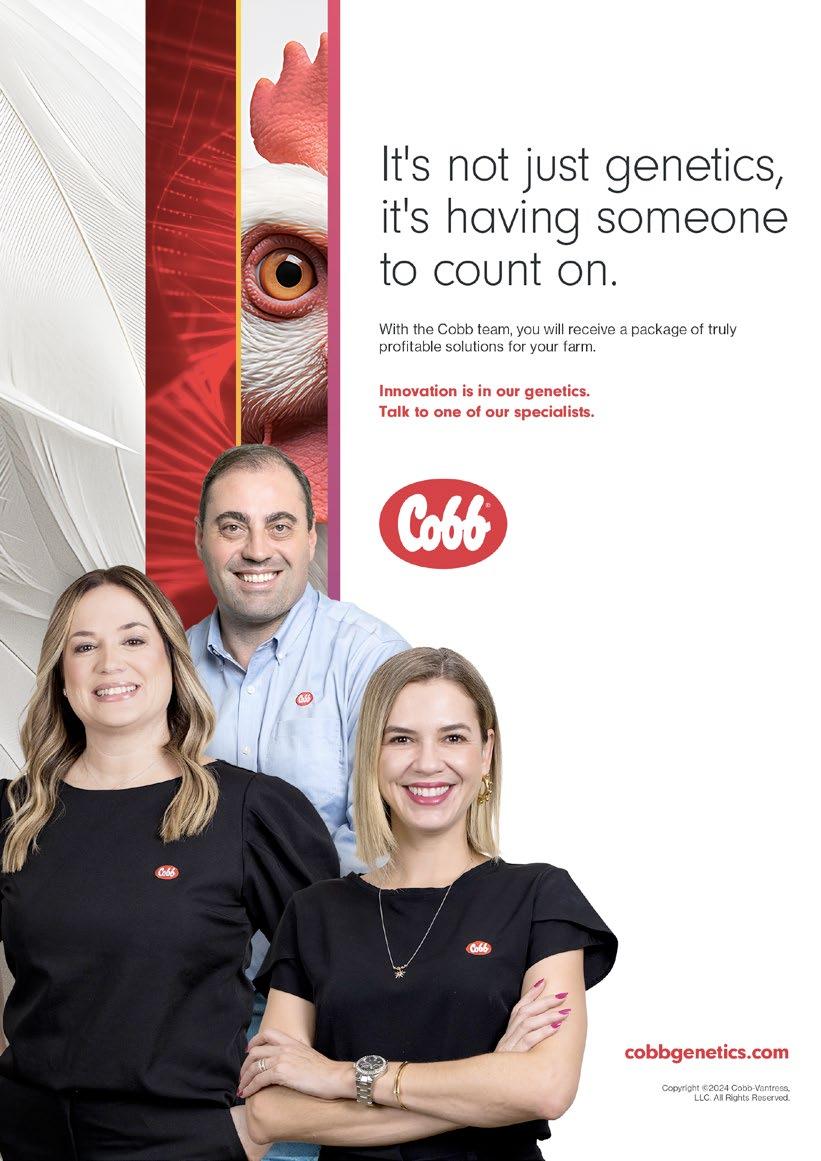
Estimating variation in mixed feed 44



Gene Pesti1,2 , Lynne Billard2 and Edgar Oviedo3
1University of Georgia
2Poultry Hub Australia
3North Carolina State University
A major goal of poultry nutritionists and feed millers is to ensure that each bird receives the nutrients it needs daily. To do that, the feed must be fairly uniform and contain adequate amounts of each required nutrient.
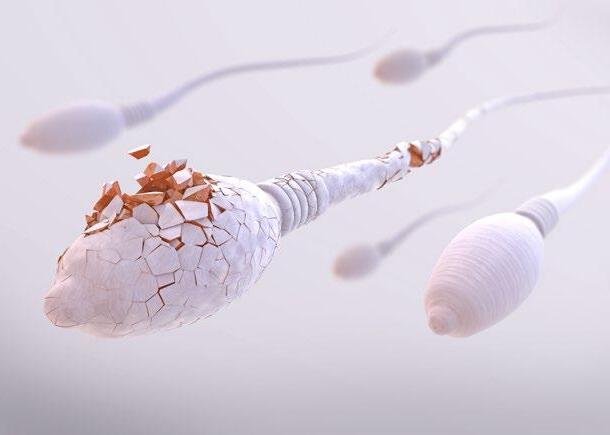
Probiotics, prebiotics, and phytogenic substances for optimizing gut health in poultry - Part II





Juan D. Latorre1 , Sakine Yalçin2 , Guillermo TellezIsaias1 , Hafez M. Hafez 3 et al.
1Department of Poultry Science, University of Arkansas, U.S.A.
2Department of Animal Nutrition and Nutritional Diseases, Faculty of Veterinary Medicine, Ankara University, Turkey
3Institute of Poultry Diseases, Faculty of Veterinary Medicine, Free University of Berlin, Germany
Numerous studies have shown that alternative products, such as probiotics, targeted microbes, prebiotics and phytochemicals, can help improve gut microbial balance, metabolism and intestinal integrity.
Emerging footpad dermatitis challenges in broilers and nutritional interventions Diseases causing broiler
Mercedes Vázquez-Añón Novus Technical Team
This summary covers the most emerging structural integrity challenges related to footpad dermatitis and carcass quality the current broiler industry is facing and nutritional interventions that can ameliorate the challenge.
Evelien Germeraad interview 76

Evelien Germeraad WBVR
Wageningen Bioveterinary Research (WBVR), part of Wageningen University & Research in the Netherlands, tested four of possible vaccines against Avian influenza (AI). After laboratory research, two of these vaccines seem promising, says researcher Evelien Germeraad of WBVR.


Edgar O. Oviedo-Rondón1 and H. John Barnes 2
1Prestage Department of Poultry Science
2College of Veterinary Medicine, North Carolina State University, Raleigh, NC
Infertility in breeder flocks has become a common concern in broiler breeder production. The causes of reproductive failure are multiple. Infertility could be related to females, but males have a more significant impact.


Edgar Oviedo
avinews.com
Professor,
Poultry Specialist Technical Direction Eduardo Cervantes International Poutry Processing Consultant Technical Direction TECHNICAL direction TECHNICAL partner
Extension
breeder
infertility
62
male
50 68
3 aviNews International June 2024
POINTING IN THE RIGHT DIRECTION

 Luis Carrasco Managing Director
Luis Carrasco Managing Director
lc@agrinews.es
+(34) 605 09 05 13
Adoración Guerrero Guzmán
Key
Account Sales Manager
int@grupoagrinews.com
+(34) 664 66 06 05
aviNews International
English-language poultry magazine for the international market
International agriNews® CONTACT US! /avinewsinternational
the
aviNews®
DISEASES OF BROILER BREEDER
In this issue we will look at some of the diseases of the male broiler breeder, talk about what we have learned about bioexclusion and biocontainment, floor eggs and their effect on hatches and the science behind egg yolk color.
Edgar Oviedo tells us that Male fertility is a combination of proper spermatogenesis related to a healthy reproductive tract and mating behavior mainly linked to plasma testosterone levels. Both aspects have a high correlation with testicular size or weight.
In this opportunity we will learn about biosecurity and what have we learned about bioexclusion and biocontainment.
On the other hand, Juan Carlos López shows us that it is important to have communication between the plant and the farm to know the percentage of floor eggs that are being presented and to be able to adjust the number of eggs to hatch, as the hatch of these eggs may be less than 10%-20% of normal.
The color of the yolk is an attribute that consumers consider when making a purchase, that is why we will see in this edition the science behind yolk color and how poultry feed can affect egg quality.
Gene Pesti and Lynne Billard tell us in their article titled Estimating Variation in Mixed Feed that It is recommended that the feed industry starts applying the information obtained with diverse NIRS models available in the market to better understand the variability in macronutrients, energy, and starch and fiber components.
We will also see that alternative product, such as probiotics, targeted microbes, prebiotics and phytochemicals, can help improve gut microbial balance metabolism and intestinal integrity in poultry.
For this edition, we had the opportunity to interview Evelien Germeraad, researcher from Wageningen Bioveterinary Research (WBVR), part of Wageningen University & Research in the Netherlands, who is currently working on the production of vaccines against Avian Influenza.
Enjoy reading and get the most out of it!
EDITOR GRUPO DE COMUNICACIÓN AGRINEWS LLC
ADVERTISING
Luis Carrasco +34 605 09 05 13 lc@agrinews.es
Adoración Guerrero Guzmán +(34) 664 66 06 05 int@grupoagrinews.com
Nicole Carletti Ramírez +57 312 391 9330 avinewslatam@grupoagrinews.com
CUSTOMER SUPPORT
Mercé Soler
EDITORIAL STAFF
José Luis Valls
Osmayra Cabrera
María de los Angeles Gutiérrez
Nicole Carletti Ramírez Héctor David Corredor Martínez
TECHNICAL DIRECTION
Edgar Oviedo

COLLABORATORS
Eduardo Cervantes

info@grupoagrinews.com avinews.com grupoagrinews.com
Subscription price 125$
Images: Noun Project / Freepik/Dreamstime
5 aviNews International June 2024 Free distribution magazine AIMED AT VETERINARIANS AND TECHNICIANS aviNews Legal Deposit B11597-2013
MALE, BIOEXCLUSION AND BIOCONTAINMENT AND THE SCIENCE BEHIND YOLK COLOR
BIOSECURITY: WHAT HAVE WE LEARNED ABOUT BIOEXCLUSION AND BIOCONTAINMENT?
Kate Barger Weathers, DVM
KB Welfare Consulting, LLC

INTRODUCTION
Biosecurity is not a new concept for the poultry, swine, or dairy industries.
However, it is a challenge that we continually face in animal agriculture operations and is also a key factor for optimizing the health, welfare, and sustainability of farm animals.
Typically, we look to past disease scenarios to see what went well (or not) and to know how we can further improve our biosecurity practices and strategy.
While learning from the past is critically important, we must also look ahead to the future and investigate how we can be more efficient, effective, and innovative.
6 aviNews International June 2024 | Biosecurity: What have we learned about bioexclusion and biocontainment? Biosecurity
BIOSECURITY, A COMBINATION OF BIOEXCLUSION AND BIOCONTAINMENT
In a paper1 published in 2012 on disease risks for bovine herds, John F. Mee describes biosecurity as a combination of bioexclusion and biocontainment.
Specifically, he states that “bioexclusion relates to preventive measures (risk reduction strategies) designed to avoid the introduction of pathogenic infections (hazards), whereas biocontainment relates to measures to limit within-farm transmission of infectious hazards and onward spread to other farms.”
This same philosophy for biosecurity applies to the poultry industry. To be successful with the elimination of disease, we must focus on new strategies for preventing the introduction of infectious pathogens (bioexclusion) and mitigating the potential spread of a disease pathogen (biocontainment).
In this paper, we’ll focus on innovative measures and effective strategies to prevent the introduction of avian pathogens and minimize their spread.
Specifically, lessons learned from the past – from poultry companies and other animal agriculture sectors - will be shared.
And ideas for the future will be highlighted that may inspire companies to consider animal-based tools for early disease detection and novel measures to eliminate disease risk for their farms.
1Mee JF, Geraghty T, O’Neill R, More SJ. Bioexclusion of diseases from dairy and beef farms: risks of introducing infectious agents and risk reduction strategies. Vet J. 2012 Nov;194(2):143-50. doi: 10.1016/j. tvjl.2012.07.001. Epub 2012 Oct 26. PMID: 23103219; PMCID: PMC7110757.
The global poultry industry has decades of experience with HPAI, mycoplasma, salmonella and other poultry diseases in commercial poultry operations. Thus, we fortunately (unfortunately) have a lot of examples to learn from and we also continue to have opportunities to improve our ability to eliminate disease and biosecurity risks.
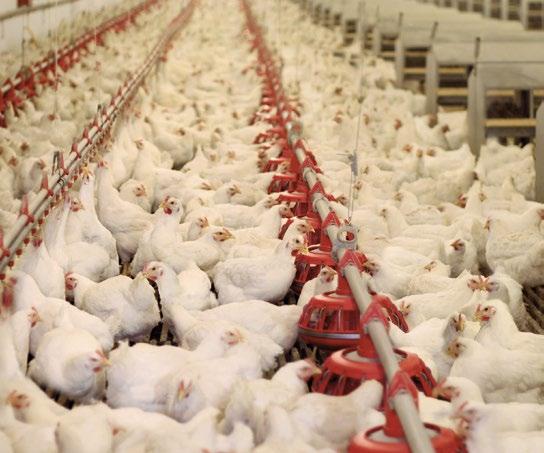

7
aviNews International June 2024 | Biosecurity: What have we learned about bioexclusion and biocontainment?
Biosecurity
Bioexclusion
The old adage, “a gram of prevention is worth a kilogram of cure” is the primary foundation for bioexclusion and actions to prevent the introduction of pathogens into poultry facilities. We know that bacteria and viruses can easily be introduced by people (footwear and clothing), equipment entering poultry barns, and vehicles entering the farm. Here are some key lessons learned and innovative initiatives to advance bioexclusion measures for poultry farms:
Cleaning and disinfection to prevent
pathogen entry:
Many QA managers say that “dilution is the solution to pollution” when talking about the importance of cleaning and disinfection (C&D) protocols. Ensuring that the disinfectant used for the C&D procedures is effective against pathogens of greatest concern (i.e. avian influenza viruses) is a critical step to reduce the risk of disease introduction.
Lessons learned:
As part of the chemical selection process, poultry companies should use laboratories to verify that the chemical is indeed effective against the pathogen(s) of interest and should also verify the required dilution to provide specific instructions to farmers and production personnel.
If the farm is in a geographic area with severe weather (i.e., freezing temperatures), it is also important to verify if the disinfectant can be used and will be effective during cold weather scenarios.
Regardless of the quality of the disinfectant, removing organic material (i.e., feces, grass, leaves, etc.) is required and must happen, as a crucial cleaning step, before the disinfectant can be utilized.
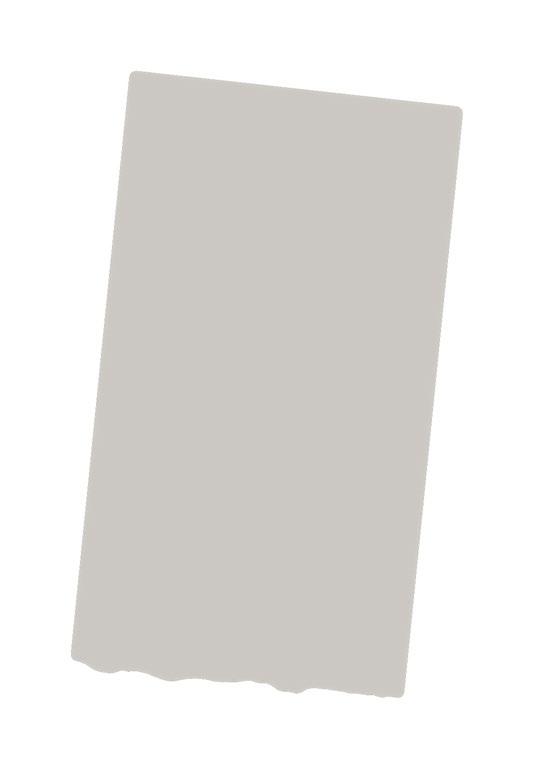
Figure 1. Trust but verify: Simple strips like these allow a company to quantify the correct concentration of disinfectant (i.e., PPM of quat (quaternary ammonia)) in boot dips as part of compliance with biosecurity measures.
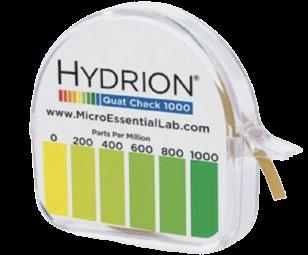

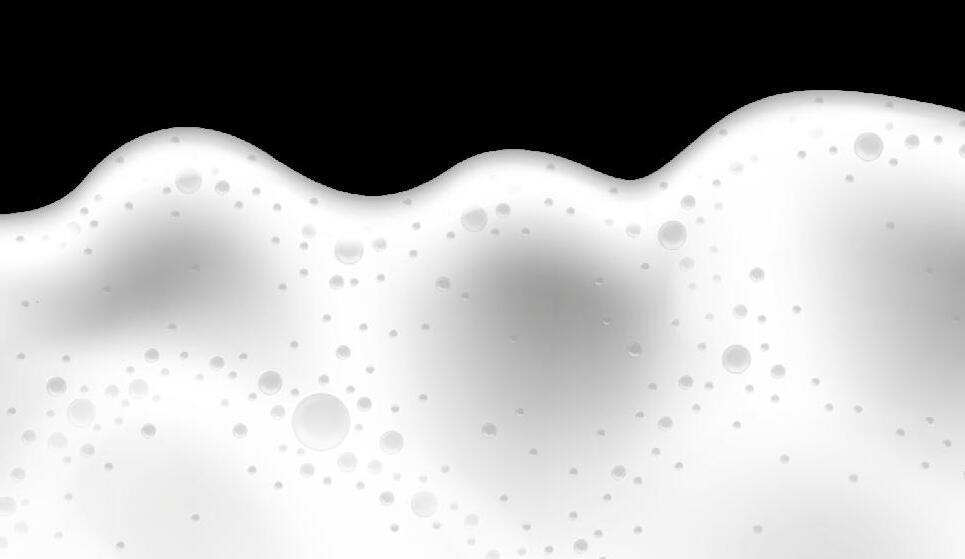
8 aviNews International June 2024 | Biosecurity: What have we learned about bioexclusion and biocontainment? Biosecurity

Lessons learned:
The mixing ratio and concentration of disinfectant are key to preventing disease introduction.
Given the expense of chemical disinfectants and the human health risks of incorrect mixing, the “glugglug” method of using an unknown quantity of disinfectant is not recommended.
In fact, adding an unknown volume of disinfectant is reckless and can result in an increased risk of pathogen entry.
Strips like this can be an easy and effective way for auditors, vets, and production managers to quickly check boot dips for the correct concentration when visiting farms (Figure 1). If the concentration is less than expected, changes should be immediately implemented to ensure that bioexclusion can happen at the site.

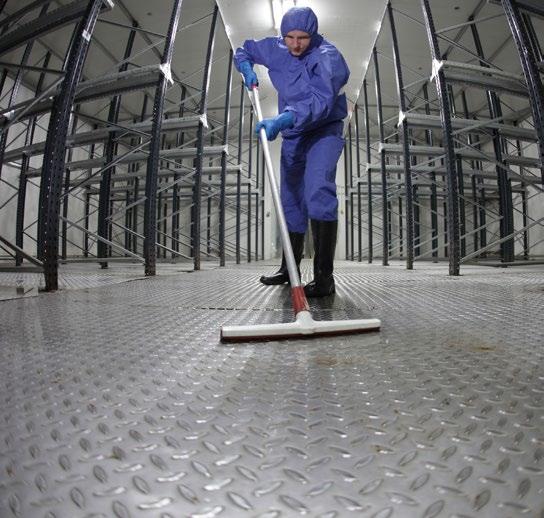
learned:
Prior mycoplasma and HPAI outbreak examples have shown that reducing people-related challenges is key in stopping disease introduction.
In addition to daily biosecurity expectations, these examples can help prevent pathogen introduction:
annual biosecurity verification (i.e., a manager conducts an annual site visit to certify that the employee does not have avian species at their residence);

people (and the actions of people) are one of the greatest risk factors for biosecurity at a poultry farm. bioexclusion strategies, companies must therefore learn how to mitigate people-related risks for pathogen introduction into farms.

out-time policies for accidental bird contact (i.e., after wild bird contact, the employee has a minimum 72 hours of downtime before entering the poultry farm); and Danish-entry system for boot changing (i.e., 3-zone entry process to avoid contamination of ‘clean’ boots (inside barn use) with ‘dirty’ boots (outside use) on the farm).
Lessons
9
aviNews International June 2024 | Biosecurity: What have we learned about bioexclusion and biocontainment?
Biosecurity
Thinking outside the barn:
Tools and protocols developed for other species can be useful for the poultry industry. When evaluating new tools for bioexclusion, we should think outside the ‘barn’ and consider what swine veterinarians, zoo and wildlife experts, and others have tested to eliminate disease introduction.

Figure 2. Bird’s eye view of migration patterns: attention to wild bird movements can help protect poultry flocks.
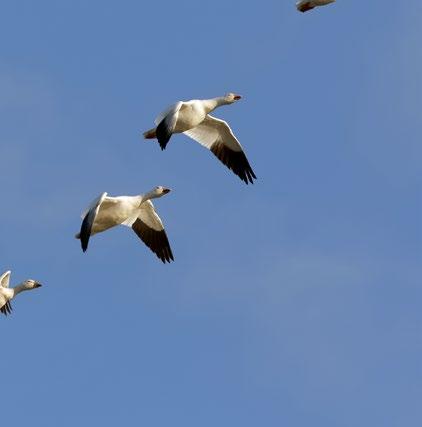
Innovative thinking:
For bioexclusion practices related to HPAI, we must prioritize ways to minimize disease risk from wild birds
New tools like BirdCast² allow farmers in the United States to pay attention to migration patterns and when increased volumes of wild birds are flying over their poultry farms (Figure 2).
While farmers cannot prevent migrating birds from flying over their barns and cannot prevent wild birds from stopping to rest on fields near their farms, this free online tool can be used as a warning indicator of increased disease risk and can allow farmers to implement additional biosecurity measures during periods when the dashboard forecasts increased wild bird migration.

2BirdCast: https://birdcast.info/
3Time and Temperature Requirements for heat winactivation of pathogens to be applied to swine transport trailers. (AASV, 2021: https://www.aasv. org/shap/issues/v29n1/v29n1p19.html)

During the PRRS (Porcine reproductive and respiratory syndrome) outbreak in swine herds several years ago, swine veterinarians discovered that increased temperature and time were key measures to inactivate swine pathogens on transport vehicles3 used to move pigs from one farm to another.
In consideration of the value and long life of breeding poultry, companies can implement innovative measures like the “heat baking of trailers” (i.e., specific temperature and programmed duration for inactivation of viruses) to their C&D protocols to further enhance bioexclusion of pathogens for equipment that is used for multiple farms.

10 aviNews International June 2024 | Biosecurity: What have we learned about bioexclusion and biocontainment? Biosecurity

Biocontainment
Modern poultry farms often involve numerous barns and a large quantity of birds.


Lessons learned:
Simple protocols can make a major difference in the early days of investigating a disease on a farm.
Thus, when a disease occurs on a farm, biocontainment is an urgent priority to limit pathogen spread. In the case of HPAI, in which all poultry on the infected site are typically depopulated, our goal is to prevent the spread of the virus to other production locations in the region and to prevent pathogen spread to other linked farms.
In the case of salmonella and mycoplasma, our goal is to prevent the pathogen spread to other barns on the farm.
In both situations, there are biosecurity lessons to be learned and new technologies to consider for achieving proactive and reactive strategies with regards to the limiting pathogen spread.
Traceability of people on a farm is an easy way to verify people movements on a site and in an area. For example, on a large farm, having sign-in sheets at the entry door to each barn allows the manager and quality assurance auditor to quickly ascertain who has been in the barn in the last week, where these individuals were previously, and when/why they were in the barn.
Having a sign-in/out book at the farm entry building with required details (name, date of visit, last location, and date of contact with poultry, houses visited on the site, etc.) is also useful as a reactive strategy and allows the company to be more efficient in


11
aviNews International June 2024 | Biosecurity: What have we learned about bioexclusion and biocontainment?
Biosecurity
Lessons learned:
On large farms, biocontainment can be implemented as a preventative strategy.
While poultry staff and farmers routinely visit “youngest to oldest” flocks when planning farm visits, an additional step can be to have stop measures between barns or farms.
For example, if barns are grouped in biosecurity zones (i.e., Barns 1, 2, and 3), a large farm can implement a biosecurity stop (i.e., clothing change, shower, etc.) before the next biosecurity zone is visited (i.e., Barns 4, 5 and 6).
While this zone set-up requires additional time and planning, it can be an effective and proactive way to reduce the risk of disease spread from one part of the farm to another.
Another protocol that should be implemented during heightened disease periods involves limiting the number of farms visited per day for company service personnel (i.e., only 2 farms per day can be visited instead of 4 or more) and restricting visits to known high-risk regions.
For example, in the case of HPAI in a region, all non-essential visits are typically prohibited to ensure biocontainment and thereby reduce the risk of disease transmission to other farms.
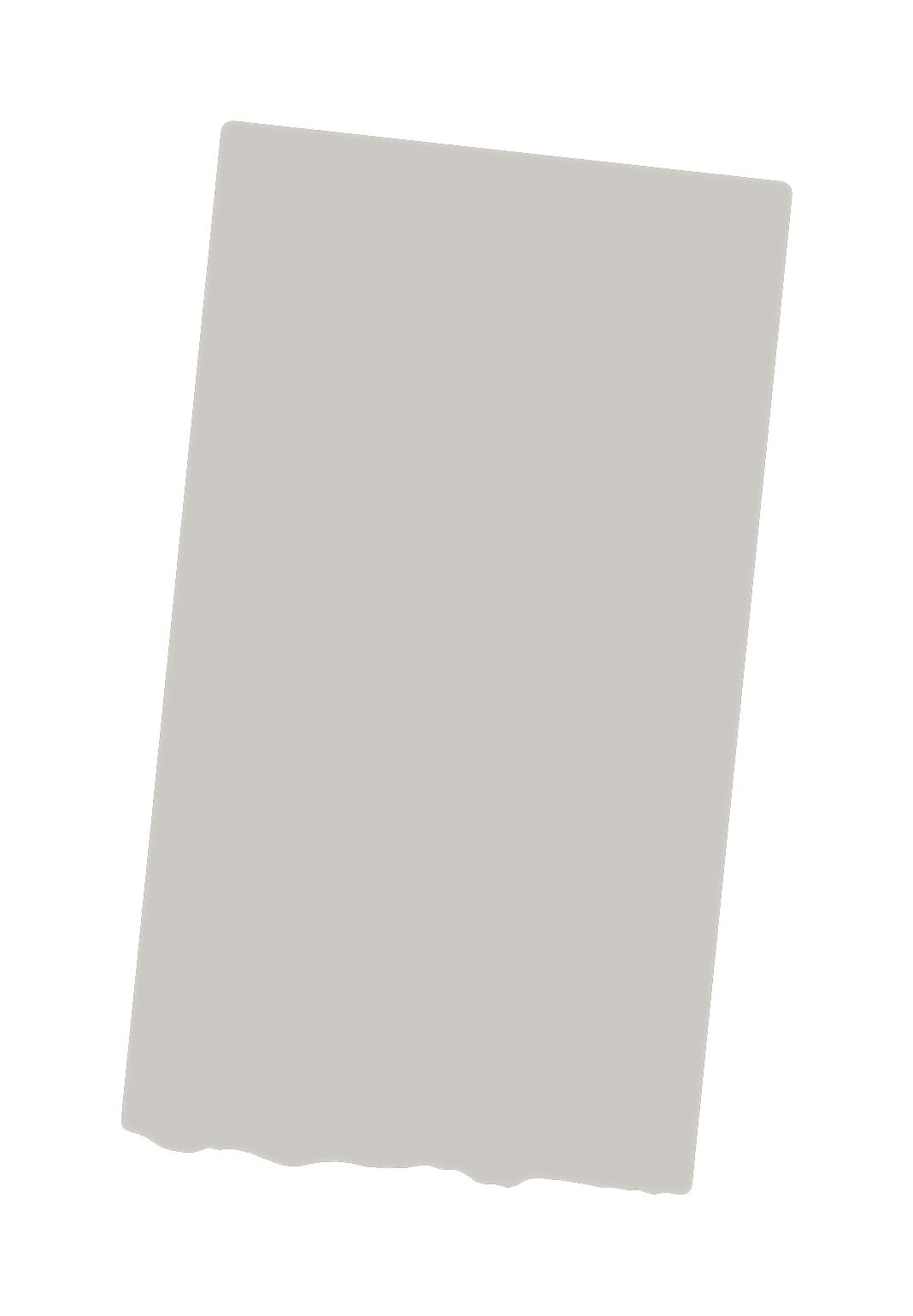
we need to focus on the animal(s) to enhance our biocontainment
Currently, we may suspect a disease after several days of decreasing egg production, increasing mortality, or decreasing water
In the future, if we continuously monitor poultry behavior and movement (activity) via video sensors and animal sounds (coughing, shrill calls, etc.) via sound sensors, we may be able to detect subtle abnormalities in the flock before performance-related signs indicate that a monitoring devices do not equate to actual disease detection (i.e., they do not tell us which disease is present), they can serve as iceberg indicators and help a farmer or veterinarian quickly investigate early warning signals of
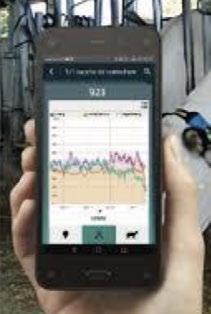
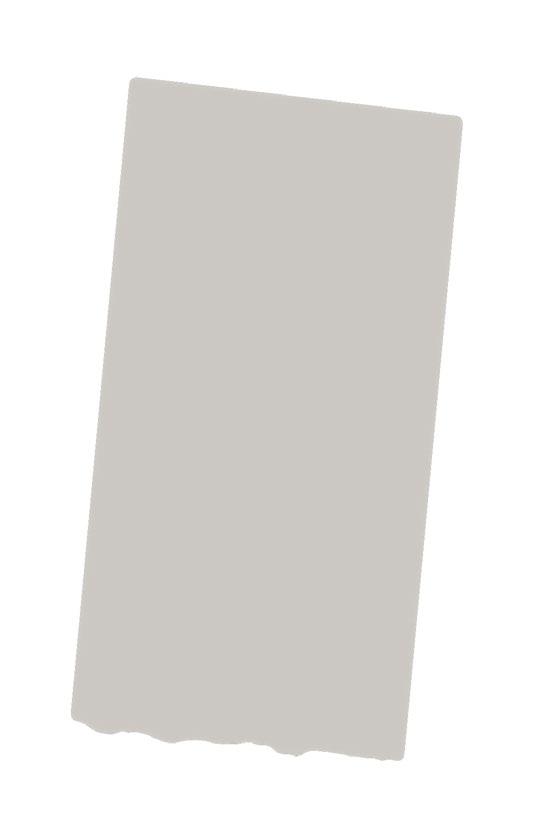

12 aviNews International June 2024 | Biosecurity: What have we learned about bioexclusion and biocontainment? Biosecurity

For large farm animals, sensors like an electronic ear tag or ingestible sensor (i.e., rumen sensor) can provide specific individual animalbased measurements that indicate if the animal has a fever, is walking less per day, etc.
For poultry, sensors focus on the flock (or barn) rather than the individual bird.
In both situations, these innovative tools can provide a wealth of information to the farmer and allow for more proactive responses to safeguard animal health.
While poultry flock monitoring technology is still being developed, it’s exciting to think that the future of animal health monitoring will help us with early disease detection and biocontainment.
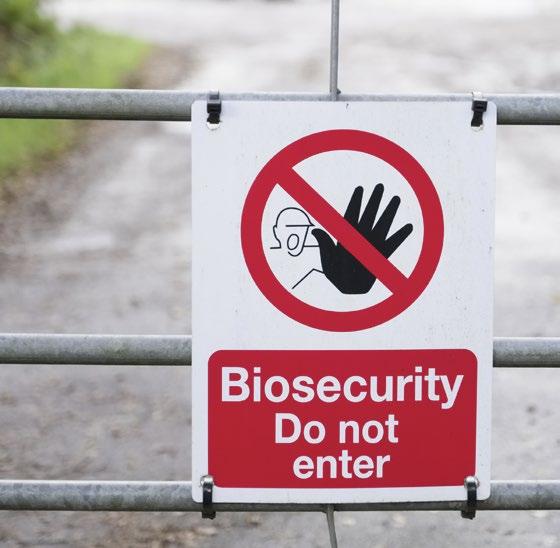
SUMMARY
When we think about the cost of disease (i.e., production losses, cleaning and disinfection costs, animal losses, supply chain disruptions, etc.), the decision to invest in biosecurity should be an easy one.

While we can learn from the past and prior disease outbreaks in the global poultry industry, we must also look ahead to future technology and innovative ideas and even consider what is being utilized in other farm animal sectors so that we can truly work towards disease elimination.
Biosecurity: What have we learned about bioexclusion and biocontainment?
DOWNLOAD PDF
13
aviNews International June 2024 | Biosecurity: What have we learned about bioexclusion and biocontainment? J
Biosecurity
PRACTICAL BENEFITS OF THE FLESHER IN BROILER BREEDERS
Sandro Cerrate, Credinser LLC, Madison, AL
Mostly breeder managers utilize manual fleshing scores to know the body conditions in broiler breeders; however, this assessment is variable due to depending on the manager’s subjective score and labor turnover. To cope with this, Credinser has developed a device for measuring the breast meat angle, named Flesher, Figure 1


14 Broiler breeders aviNews International June 2024 | Practical benefits of the flesher in broiler breeders
This tool has the following benefits:
PRECISION
The Flesher contains continual numbers expressed as degrees; without using the subjective manual flesher score.
These continuing degrees offer reliable information producing precise analysis of breast meat growth.
PRACTICAL
Identifying the correct place in the breast meat and applying sufficient force between the Flesher and the bird makes it practical and easy to use.

FLESHER ANGLE CONVERSION
Managers can convert the angles of the Flesher to a standard Flesher score; using a simple linear equation
RECORDS DURING CRITICAL PERIODS AND FIELD TESTS
Managers can use the Flesher from four until 65 weeks of age. Although, in times of limited labor, they can record the Flesher angles weekly from 18 to 28 weeks of age for females and from 18 to 33 weeks for males.
For field tests, the managers could record the Flesher angles every week or at least every other week using the same weighted birds, resulting in great company benefits.

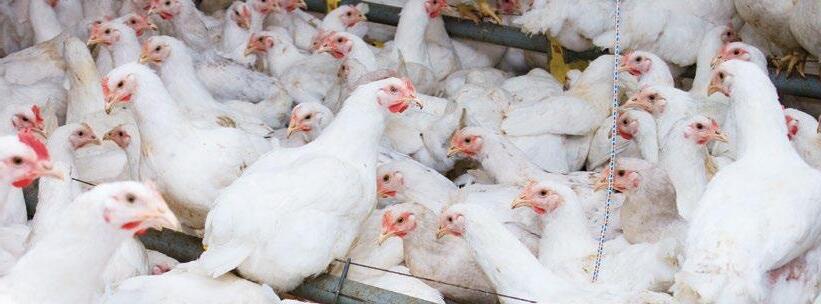 Figure 1. Flesher.
Figure 1. Flesher.
15
Figure 2. Flesher.
breeders aviNews International June 2024 | Practical benefits of the flesher in broiler breeders
Broiler
SUPPORT BODY WEIGHTS
Provides reinforcement when the body weights are inconsistent. For example, sometimes live weights are higher or lower than expected.
To deal with this problem, recording Flesher measurements and live weight values will allow confidence and trust in the outcomes, preventing extra time and labor used.
AVOID DIGESTA VARIATIONS IN LIVE WEIGHTS
External factors such as weighing time, environment, type of diet, or even health status will influence the final body weight showing fluctuations due to the amount of digesta.
This digesta, composed of feed and water in the intestinal tract, will produce a variation in the live weights.

HELPS TO DESIGN NEW BODYWEIGHT PROFILES
The Flesher values will account for the development of breast meat per se without considering the diverse digesta.

In the continuous development of broiler genetics, new live weight profiles should be tested constantly to produce the highest live performance and economic return.
The Flesher evaluation will help to adjust some body weights with inconsistent values.
To achieve this, managers can use simple correlations between Flesher and live weight to adjust some weights and develop new bodyweight profiles.

16 aviNews International June 2024 | Practical benefits of the flesher in broiler breeders Broiler breeders

IDENTIFY THE BODY COMPOSITION DUE TO DIETARY ENERGY-TO-PROTEIN RATIOS
In pullet breeders finding the best body composition due to energy-to-protein ratios will yield the highest chick output per hen house. These dynamic body depositions could be recorded indirectly by registering the abdominal fat or breast meat.
The breast meat angle of the Flesher can easily be related to the whole breast muscle weights, producing simple linear equations.
In commercial trials, the fluctuation of body composition due to dietary nutrients requires a calculation of muscle growth during the whole period for the same group of birds.
For this reason, managers can apply the Flesher for field breeder trials testing new dietary nutrients during the rearing or production phases.
INDIRECT MEASURE OF ABDOMINAL FAT CERTAINTY IN THE FEED ALLOCATIONS
When managers compare birds with similar body weights, birds with more breast muscle meat contain less abdominal fat.
Thus, quantifying the breast muscle will also provide information on the fat gain.
Therefore, the dimensions of the Flesher will provide insight into body fat growth.
When the body weights and Flesher evaluations have a similar trend, calculating the new feed intake for next week will provide confidence.
When there are discrepancies between Flesher degrees and body weights, the Flesher degrees will guide to supply the final amount of feed.

17
breeders aviNews International June 2024 | Practical benefits of the flesher in broiler breeders
Broiler
ENHANCE BODY WEIGHT UNIFORMITY
By providing the proper feed allocations for the different categories or groups of birds, the birds reduce the body weight variation every time they eat the amount of feed calculated with certainty with the help of the Flesher.
The angular values and coefficient of variation of the angles from each category will give more insights for supplying precise feed amounts.
Herein, in general, the variation of the Flesher angles is more sensitive than the variation of the live weight; for this reason, the coefficient of variations of the Flesher is higher than that of the live weight for females or males.
INCREASE AND EXPLAIN EGG PRODUCTION
To accomplish persistence and high egg production, adequate body composition and bodyweight uniformity require information on body weight profile and body tissue gains during the pullet period.
The Flesher evaluation in pullets will help to sustain better body weight uniformity and find the best muscle growth.
Further, when new dietary amino acids and insoluble fiber levels are, for instance, tested, birds lay eggs according to their muscle growth and body fat reserves.
In this way, the Flesher values will explain the results due to new dietary changes.
IMPROVE FERTILITY AND HATCHABILITY
Accurate estimation of the breast meat in roosters will allow for controlling the male growth averting overweighs as roosters age.
Selecting and producing taller roosters by precise feed amounts, bodyweight profile, and Flesher values during the rearing period will establish a high amount of roosters with homogenous breast meat and successfully mating.
This approach will avoid the scenario of short roosters with huge over-fleshing that are prone to incomplete mating.
Further, during the lay period, with a controlled rooster live-weight gain and thereby fleshing growth due to using the Flesher, the fertility will keep high as the hen ages.

CONCLUSIONS
The Flesher angles open an opportunity for supporting body weight, feed intake, breast meat uniformity, and body composition.
Proactive poultry companies would benefit by evaluating field tests using Flesher appraisals, leading to high egg production, fertility, and hatchability persistence.
Practical benefits of the flesher in broiler breeders DOWNLOAD PDF 18 aviNews International June 2024 | Practical benefits of the flesher in broiler breeders Broiler breeders
SetCare®
Optimal incubation takes 24 days
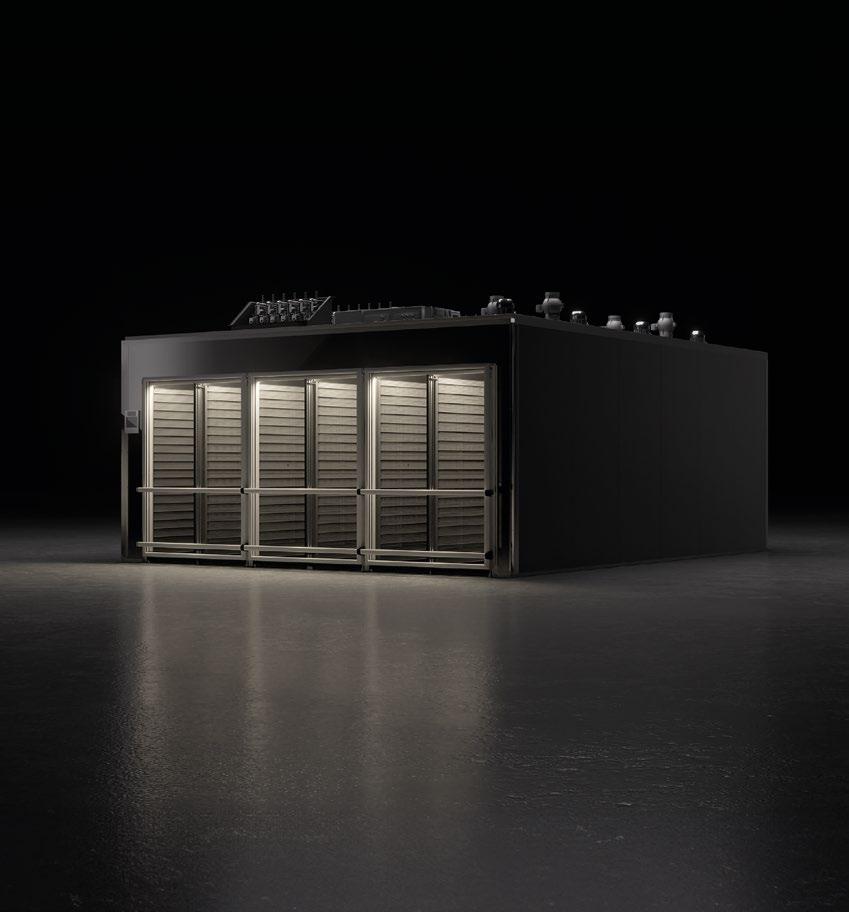

SetCare is the new HatchTech setter. Improve your performance with an incubation process of 24 days.
• 3% lower embryo mortality
• Overall improved chick quality
• Improved FCR and uniformity Don’t settle for less
FLOOR EGGS AND
THEIR EFFECT ON HATCH
Juan Carlos López, MVSc, PhD Technical Manager, Poultry Central America, Caribbean and Ecuador, MSD Animal Health
Despite all the handling to which our breeding hens are exposed, a percentage of the eggs will be laid on the floor of the houses.
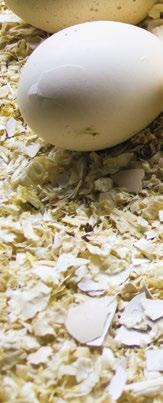
The collection of these floor eggs is costly for the poultry farmer (Photo 1) Because they are usually dirtier, they contain more bacteria in their shells (Berrang et al., 1997) and more cracks, compared to eggs laid in nests (De Reu, 2006)


20 aviNews International June 2024 | Floor eggs and their effect on hatch Incubation
A large percentage of these cracks are the gateway for bacteria to enter the egg, resulting in lower hatchability, lower quality chicks and increased mortality in the first days on the farm (Khabisi et al., 2012).
It is commonly believed that eggs laid on the floor, if they look clean, present no problem to the hatchery.

However, Tuellett 1990; Van den Brand et al., (2016) and Meijerhof et al., (2022) reported in their studies that floor eggs even if they look clean or have been washed have a higher degree of contamination and generate a lower hatch than nest eggs.
This percentage of minor birth is between 10% to 20%, depending on the type of bed and its condition, and can be a not insignificant figure.

The cause of such minor hatching is largely attributed to embryo death by contamination of the yolk sac, primordial around day 18 of embryonic development (Deeming et al. 2002), as some birds are unable to free themselves from the shell (Moosanezhad Khabisi et al. 2012).
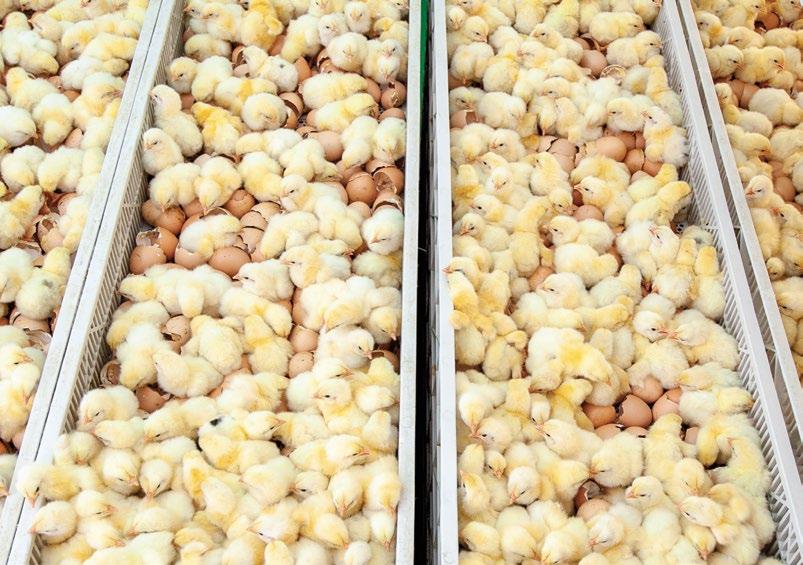
It should be noted that some studies report mortality at all ages of embryonic development as can be seen in Table 1 adapted from Van den Brand et al (2016)
Photo 1. Collection of floor eggs is costly for the poultry farmer.
Table 1. Mortality at all ages of embryonic development.
% Rotten eggs % Early embryonic mortality % Intermediate embryonic mortality % Late embryonic mortality % Birth Clean Nest 0b 3,6b 1,9b 1,9b 78a Floor 5,4a 13a 5,1a,b 7,6a 55,7b Floor Washing 2,1b 14,3a 7,9a 7,1a,b 54b 21 aviNews International June 2024 | Floor eggs and their effect on hatch
Incubation
In addition to embryonic mortality, it is well known that in hatcheries where there are floor eggs, the number of eggs that explode increases, which generates a high bacterial load inside the machines with all the deleterious effect that this can have (Photo 2 and 3)

Chicks hatched from floor eggs, washed or not, are of lower weight when they leave the hatchers, largely due to the fact that the cracks in the shell that usually occur in this type of eggs generate a greater loss of moisture during incubation or to changes in conductance (Burton and Tullett, 1983) that cause the birds to hatch earlier than programmed and have to wait inside the hatchers suffering from dehydration.

Chicks from floor eggs have been reported to be of lower quality as assessed by percent yolk-free body mass and bird length.
Some studies show that litter in poultry houses where birds from floor eggs are housed has higher humidity and therefore birds may have more plantar dermatitis or tarsal lesions (Van den Brand et al., 2016). It is believed that this may be due to compromised in intestinal development.

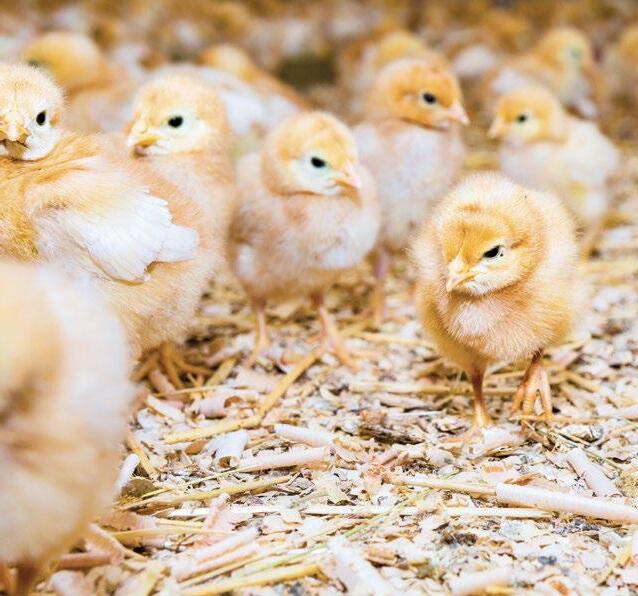 Photo 2 and 3. The number of exploding eggs generates a high bacterial load inside the machines.
Photo 2 and 3. The number of exploding eggs generates a high bacterial load inside the machines.
22 aviNews International June 2024 | Floor eggs and their effect on hatch Incubation
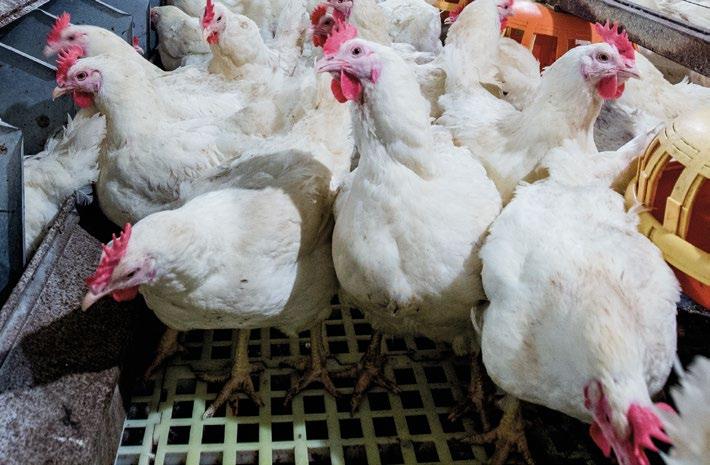
WHAT TO DO WITH THE FLOOR EGG?
As can be seen in Table 1 (Van den Brand et al., 2016), washing floor eggs is not the answer to the problem. The solution is to prevent birds from getting used to laying eggs on the floor.
It is considered “normal” in heavy birds up to 2% floor eggs, higher percentages invite to review bird managements such as:
Remember that 80% of the eggs are laid in the first 4 hours after the presence of light in the house.
Review the number of collections, at least 5 times a day, 3 of them in the morning.
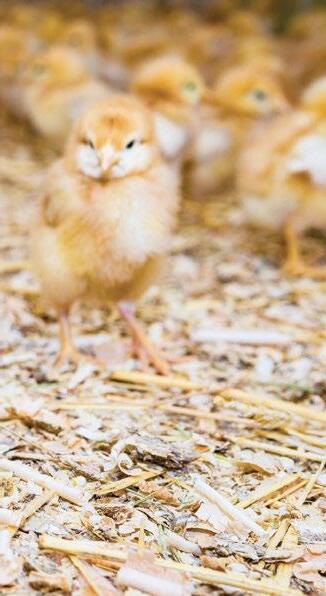
Avoid densities higher than 5.5 birds/m2, as these add very strong competition for nest availability or create mobility problems to have access to them.
A hand nest should be available for 3-4 birds, in mechanical nests 40 females per linear meter (Photo 4).


23 aviNews International June 2024 | Floor eggs and their effect on hatch
Photo 4. Check availability and entry to the nest.
Incubation
Do not place power lines over drinkers and feeders.
For the first three weeks of laying walk around the house 10-12 times a day, this encourages the birds to climb onto the slats. After three weeks you can reduce to 6 times, picking up the eggs from the floor and encouraging the birds not to nest on the floor. You can load the birds that are nesting on the floor and introduce them to the nests.
Evaluate the height of the slats, this should be less than 45 cm for heavy birds and if necessary add ramps to facilitate access.
Check the slope of the slats, this should not be greater than 5%.
Add drinkers at the level of the slats so that the birds get used to climbing them (Photo 5).
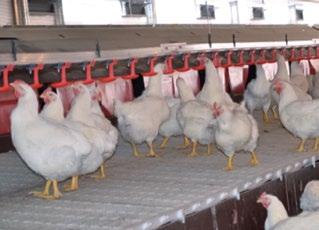
Introduce perches or platforms from day 28 of age (Photo 6).


Age of transfer to production farms (minimum 2 weeks before) and always having all nests and equipment installed on the farm prior to arrival of the birds.
Uniform distribution of light in the house. The appearance of dark areas invites birds to nest where they should not.
Keep nests closed until laying begins, so that the birds associate them with laying and not with a sleeping area.
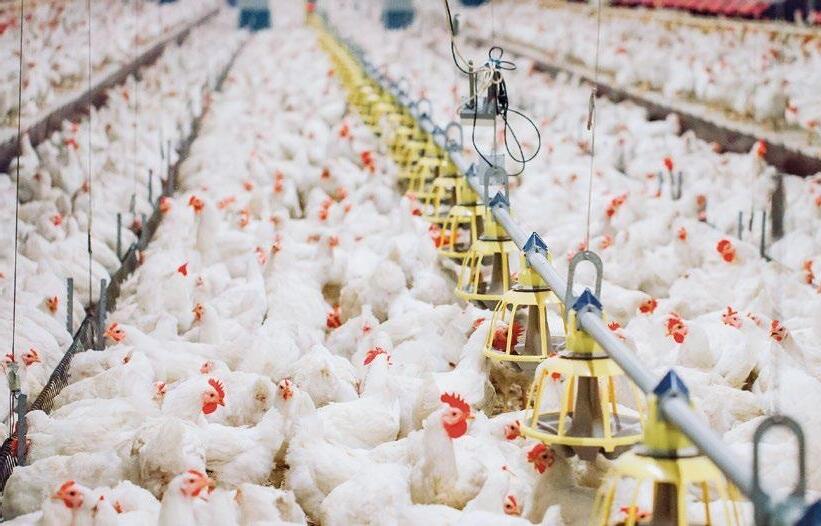 Photo 5: Install drinkers at slat level.
Photo 5: Install drinkers at slat level.
24 aviNews International June 2024 | Floor eggs and their effect on hatch Incubation
Photo 6. Installing perches and platforms. Image Aviagen.
If the nests are automatic, run the conveyor belts a couple of times every day prior to laying to get the birds used to the noise.
In posture close the nests one hour before the light is turned off and open them 2 hours before the light is turned on, Photo 7.
Photo 7. In posture close the nests one hour before the light goes out.
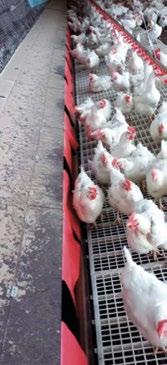
Locate the nests in areas where they do not receive direct light.
WHY IS NEST CLEANING IMPORTANT?
The body temperature of the hen at the time of laying is 40-41°C. At this temperature, the egg comes into contact with the nest “litter”, which will have temperatures between 30°C to 20°C depending on whether it stays inside the nest or rolls onto the conveyor belt. During cooling, the contents of the egg shrink further, but the shell does not, creating a suction towards the inside of the egg.
When the egg is in a dirty environment, bacteria will be absorbed through the pores and contaminate the egg.
It is important to periodically check the condition of both manual and automatic nests.
Change the litter of the manual nests for clean material when organic matter is present, Photo 8
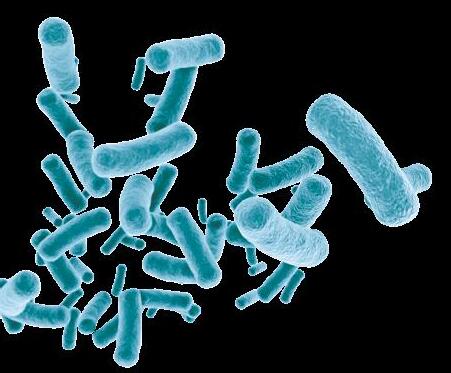

25 aviNews International June 2024 | Floor eggs and their effect on hatch
Photo 8. Keep the litter clean, whether in manual or automatic nests.
Incubation
In the automatics the “pads” or cushions composed of plastic extensions must also be cleaned and sanitized. Over time, the height of the pad extensions can become uneven, making it difficult for the egg to roll
Photo 9.

WHAT TO DO WITH A CRACKED EGG?
The percentage of cracked egg should be less than 0.5%. The most practical is to prevent cracking through:
Frequent collections.
Good nest conditions.
In automatic nests, the conveyor belts should be well aligned so as not to magnify the problem with cracking due to shocks.


It is important to determine at what point the egg crack occurs so that it can be corrected. Photo 10 shows a typical egg exposed to the hen’s claws inside the nest. This is a frequent situation when there is competition among birds for space inside the nest (low number of nests per bird or nests in poor condition that the birds do not use).
Photo 9. Nest pads should be checked for perfect egg rolling. AstroTurf® image.
26 aviNews International June 2024 | Floor eggs and their effect on hatch Incubation
Photo 10. Fissure due to the hen’s claw.

The crack known as hairline (Photo 11) usually occurs when the egg hits an inflexible or rigid surface, while the star type (Photo 12) is when they hit each other (Gupta, 2008).


Interestingly, it has been reported that linear hair-like cracks compromise embryo viability more than star-shaped cracks (Moosanezhad Khabisi et al. 2011).
A study by Bartnet et al 2004 used eggs with linear hair-like fissures, which normally go unnoticed on the plant and are only visible by illumination.
Not only hatching was almost 20% lower in cracked eggs compared to normal eggs, but on-farm mortality at 14 days was higher respectively (7.5% vs. 2%).
Meanwhile, Meijerhof et al 2022 reported that if a cracked egg is surgically taped, regardless of whether the crack was on the farm or in the plant, the hatch percentage will be close to normal.
CONCLUSION
It is important to have communication between the plant and the farm to know the percentage of floor eggs that are being presented and to be able to adjust the number of eggs to hatch, as the hatch of these eggs may be less than 10%-20% of normal.
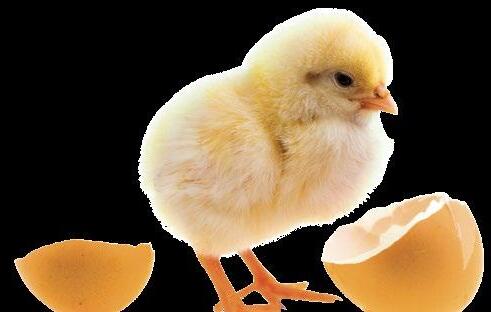
If the percentage of floor eggs is higher than 2%, various management practices in breeding and production should be reviewed in order to reduce them.
Floor eggs and their effect on birth DOWNLOAD PDF
Photo 11. Hairline crack.
Photo 12. Star type crack.
27 aviNews International June 2024 | Floor eggs and their effect on hatch
Incubation
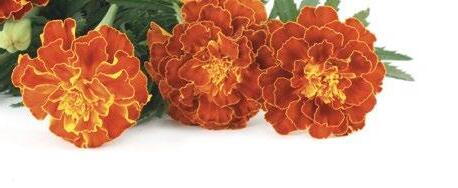
THE SCIENCE BEHIND YOLK COLOR: HOW POULTRY FEED CAN AFFECT EGG QUALITY
Suzete P. de M. Neta1*; Ana C. B. Doi1*; Vivian I. Vieira2*; Renata B. M. S. Souza3; Ananda P. Felix4*; Simone G. de Oliveira5*
1Graduate in zootechnics; 2Doctoral in zootechnics (PPGZ); 3Doctoral in veterinary sciences (PPGCV); 4Associate professor; 5Adjunct professor.*Universidade Federal do Paraná, Curitiba/PR, Brasil



Of the largest egg-producing companies in Latin America, 50% are located in Brazil, accounting for just over 10% of all global production. In 2021, of the 55.5 billion eggs produced, 99.54% were destined for domestic consumption, demonstrating a
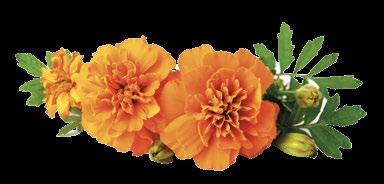
significant increase in egg consumption, reaching 257 units of eggs per inhabitant. According to the report published by ABPA in 2023, between 2018 and 2022 the Brazilian population’s per capita egg consumption increased by just over 35%.
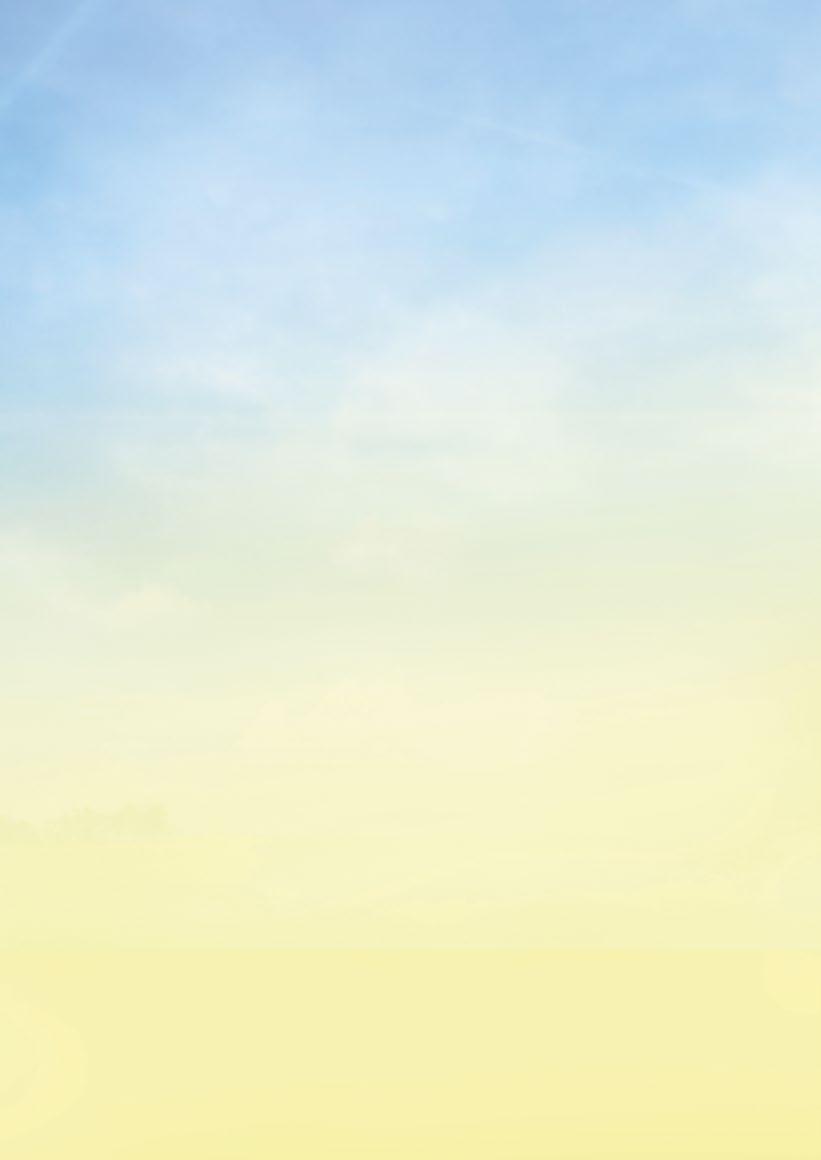
28 Egg quality aviNews International June 2024 | The science behind yolk color: how poultry feed can affect egg quality
The increase in egg consumption in 2021 may be related to the COVID-19 pandemic, which has led many consumers to look for more accessible and affordable sources of animal protein.
In situations of budget constraints, as has been the case during the pandemic, consumers tend to select foods with lower added value, which may explain the increase in demand for eggs.

Brazil accounts for 10% of world production
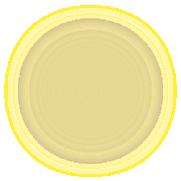
99.5% consumed internally
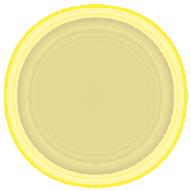
2021 - over 55 billion units produced
257 units per capita
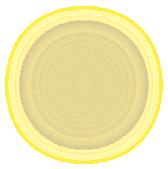
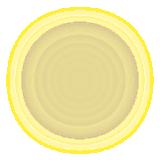
2023 per capita consumption could be higher than 260 units
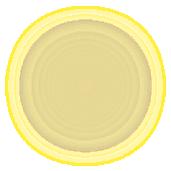
Eggs are a source of protein with a high biological value that can be compared to breast milk in terms of nutritional composition, which means that a large part of all the amino acids that make up this food will be used efficiently by the body.
As well as being a source of protein, eggs are also a source of unsaturated fatty acids, minerals and vitamins (Table 1).
Table 1. Detailed nutritional composition of chicken eggs in nature. Adapted from ANSES-CIQUAL (2022).
Consumer choice is driven by intrinsic characteristics such as texture, appearance and aroma, by extrinsic product characteristics such as labeling and packaging, or by sociocultural factors such as habits, beliefs or trust in the production industry.
Despite this, sensory properties such as shell, egg size and yolk color are the main characteristics that determine the consumer’s choice of product (Rondoni et al., 2020).
29 Egg quality aviNews International June 2024 | The science behind yolk color: how poultry feed can affect egg quality
Item Average content Energy (Kcal/100g) (EU n°1169/2011) 140 Protein (g/100g) 12.7 Fat (g/100g) 9.83 Mono and polyunsaturated fatty acids (g/100g) 5.31 Calcium (mg/100g) 76.8 Iron (mg/100g) 1,88 Selenium (µg/100g) 2.58 Vitamin A (µg/100g) 182 Vitamin D (µg/100g) 1.88 Vitamin E (µg/100g) 1.43
The color of the yolk can vary from a pale yellow to an intense orange, and to determine this quickly, a practical tool can be used, which is to compare the color of the yolk in natura with a range of colors with a scale of 1 to 16 shades from yellow to orange (Figure 2).

Sources of xanthophyll carotenoids can be natural, such as corn and red peppers, or synthetic, such as 10% canthaxanthin (red pigment) or beta apo-8-carotene ethyl ester (Garcia et al., 2002).
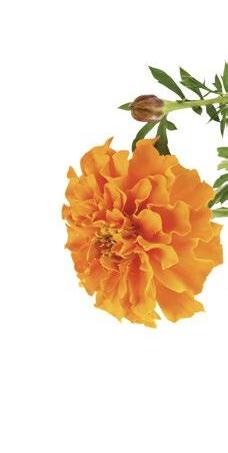
Carotenoids are widely used in the food, pharmaceutical and cosmetics industries for humans, as well as in the feed industry (Valduga, 2009).
An example of its application in animal nutrition is its use as an additive in layer poultry farming, with the xanthophylls group being the most widely used, since they are absorbed and accumulated in the body, thus modifying the color of the egg yolk.
Among the three sensory characteristics mentioned above, we will discuss in the course of this technical material the use of some natural ingredients in poultry feed and their effect on yolk coloration.
CAROTENOIDS
Among various compounds of plant origin, carotenoids are fat-soluble substances which, in addition to their pigmenting capacity, are also precursors of vitamin A, protect cells against oxidative stress and improve the performance of the immune system (Bendich & Olson, 1989; Rios et al., 2012).
Transport and absorption of carotenoids
The absorption metabolism of carotenoids takes place in the presence of bile salts, in the form of fat droplets, which are transformed into micelles in the lumen of the intestine (Parker, 1996).
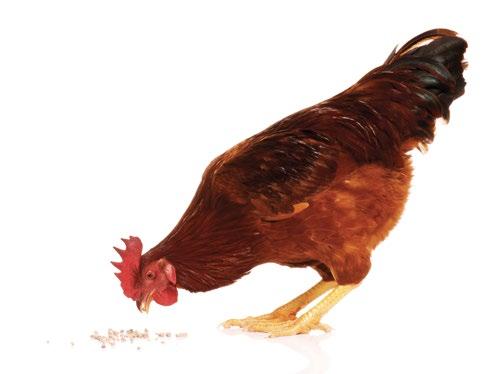

30 Egg quality aviNews International June 2024 | The science behind yolk color: how poultry feed can affect egg quality
Figure 2: Color fan for quick comparison of yolk coloration (Source: DSM YolkFan™).
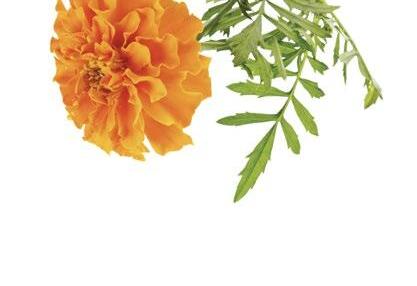
With the help of lipoproteins in the cell membrane, the carotenoid, which has already been absorbed, accumulates in fat-rich cells and is consequently deposited in the egg yolk (Pérez-Vendrell et al., 2001).
Transport and absorption will depend on the type of carotenoid, the amount provided in the diet and the basic content of pigments present in the sources used to formulate these animals’ diets (Maia, 2020).
Natural sources of carotenoids
Annatto (Bixa orellana L.)
Among the plant species rich in carotenoids is annatto, the fruit of the annatto tree, a small tree widely distributed throughout tropical America.
Its seed, used ground, is rich in coloring substances called bixin, norbin and nobixate, and is used to produce colorifices (Fabri & Teramoto, 2015).
The use of annatto flour as an alternative to modify the color of laying eggs is a strategy that has already been used in several studies, such as Silva et al. (2000) who used six levels of annatto oil extract inclusion in laying rations using sorghum as the main source of energy, compared to a cornbased diet.
The authors reported that the inclusion of 0.1% Urucum extract in sorghumbased feed promoted similar yolk pigmentation when compared to layers fed corn-based feed.
In a recent study, Martínez et al. (2021) evaluated 3 levels of inclusion of annatto powder in the diet of layers (0.5%, 1.0% and 1.5%) for 56 days on the external characteristics of eggs, such as egg weight, resistance and shell thickness, and internal characteristics such as albumen height, Haugh unit and color of the yolk. The authors reported that of all qualitative attributes that were influenced by the inclusion of Urucum powder, the color of the yolk was affected in a more expressive way.
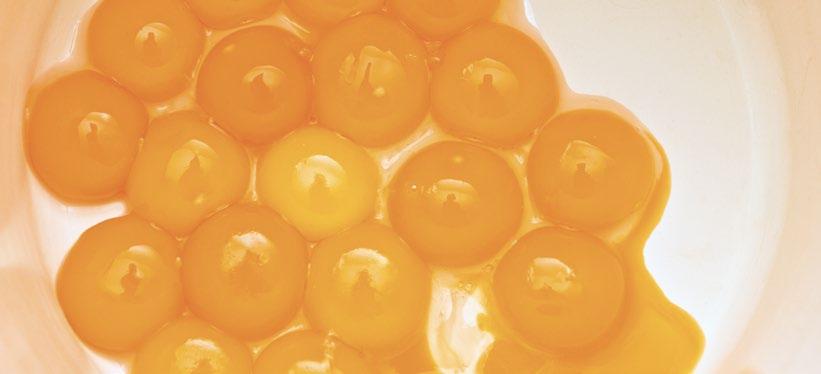
These studies show that the use of annatto as an alternative to change the the tone of the yolk is effective and strategy to produce eggs with a different color, more orange than conventional eggs.
31 Egg quality aviNews International June 2024 | The science behind yolk color: how poultry feed can affect egg quality
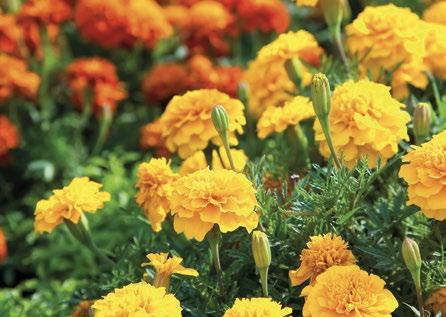
Marigold petal extract (Tagetes erecta L.)
Marigold is a flower belonging to the Asteraceae herb family and is native to North, Tropical and South America. It is currently the only flower marketed as a source of carotenoids (xanthophylls, zeaxanthin, lutein) and other compounds such as flavonoid (Hadden et al., 1999).
The use of Marigold petal extract is feasible when the diet contains low levels of xanthophylls, such as diets based on sorghum, millet and wheat.
In the study by Oliveira et al. (2017), the authors evaluated the inclusion of paprika and Marigold extract in sorghum-based diets for light layers and found that the addition of these natural pigments changed the color of the yolk.

For Japanese quail, there are studies, such as the one developed by Moura et al., (2011), which investigated how the inclusion of Marigold petal in a sorghum-based diet could change the color of egg yolks.
The authors reported that the use of the extract was effective and resulted in a yolk colorimetric score equivalent to that of other quails fed corn-based diets.
Paprika extract
Paprika is obtained through grinding of dehydrated fruits bell pepper (Capsicum annuum).
The fruit must be fully ripe for the carotenoid pigments such as capsanthin, capsorubin, carotene, cryptoxanthin and zeaxanthin are present (Henz & Ribeiro, 2008). Among the pigments, capsanthin represents 50 to 70% of the xanthophylls present in paprika, thus giving the pigment a red-orange color (Marçal, 2021).
The compounds present in paprika extract are effective pigmenting substances for modifying the color of egg yolks (Ribeiro et al., 2012), but they are more expensive than other sources.
When comparing the inclusion of paprika extract alone or in combination with Marigold petal extract, Lokaewmanee et al. (2010) reported that the yolk coloration of layers fed a corn-based control diet (without added pigment) was paler compared to the yolk of birds fed 0.1% paprika extract.
32 Egg quality aviNews International June 2024 | The science behind yolk color: how poultry feed can affect egg quality
Clear the Hurdles
Every Hy-Line layer is bred with our superior genetics to breeze past challenges while speeding toward proli c egg numbers.
Contact your Hy-Line representative to learn more.

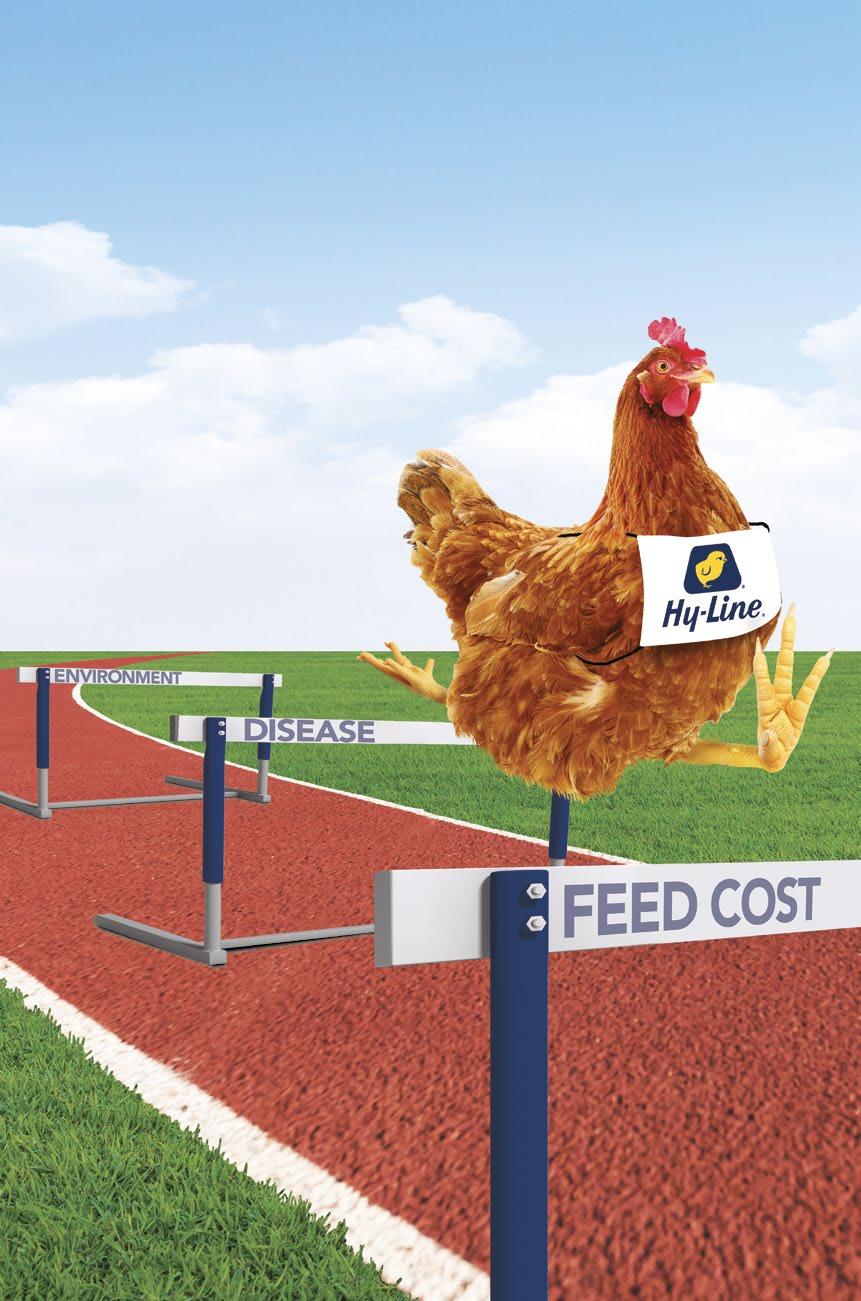


However, when paprika and marigold extracts were used in combination, including 0.1% of each, the intensification of the yolk’s orange hue was more pronounced, as shown in Figure 5.
This shows that the use of paprika, whether or not combined with the Marigold petal, can intensify the color of the yolk.
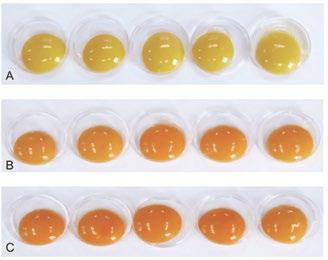
Figure 5. Coloring of egg yolks from layers fed or not fed with paprika and Marigold extract combined or not. A = Control diet with no extract included; B = Inclusion of 0.1% paprika extract; C = Inclusion of 0.1% paprika extract + Inclusion of 0.1% Marigold extract. Adapted from Lokaewmanee et al., (2010).
Similarly, when evaluating the inclusion of paprika extract and Marigold for light layers fed a sorghum-based diet, Oliveira et al. (2017) observed that 0.6% paprika extract was effective in modifying yolk coloration so that it reached score 14 in the colorimetric range.
However, the authors did not observe significant effect on coloring of the yolk when the birds were fed with the two pigments, therefore, concluding that paprika extract is effective for intensify the color of the yolk regardless of the presence or absence of the use of Marigold extract.
Turmeric powder extract
Turmeric or saffron (Curcuma longa L.) belongs to the same ginger family and is commonly used in cooking because it has a slightly bitter/peppery taste and for having a citrus fragrance. In addition to the known sensory characteristics of this spice, its use as pigment additive has already been demonstrated in poultry diets.
Turmeric powder supplementation for 7 weeks was able to intensify egg yolk coloration in layers as shown by Park et al., (2012), the authors used levels of 0.10%, 0.25% and 0.50% and obtained an effect on yolk coloration already with the lowest level of turmeric inclusion.
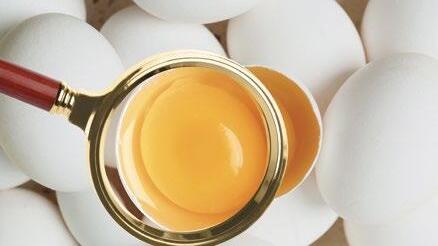
This same effect was observed by Hadj Ayed et al. (2018) when evaluating the inclusion of turmeric powder for layers at dosages of 0.5, 1.0, 1.5 and 2.0%, yolk coloration intensified linearly for birds fed turmeric powder ranging from 7.81 to 9.19 compared to the calorimetry range.

34 Egg quality aviNews International June 2024 | The science behind yolk color: how poultry feed can affect egg quality
In addition to its function as a pigment, turmeric may have an effect on the intestinal health of broilers challenged with Eimeria.
A study by Gogoi et al. (2019) showed that animals supplemented with turmeric powder (200mg/kg of feed), showed less deposition of oocysts and a reduction in intestinal lesions (Yadav et al., 2020).
Corn grain
Corn is an ingredient widely used as a source of energy in poultry diets. Although it has a lower concentration of carotenoids compared to other foods, it is considered a source of this class of pigmenting substances (Fassani et al., 2019).
The endosperm of the grain contains carotenoids classified as xanthophylls (lutein, β-cryptoxanthin and zeaxanthin) and carotenes (β-carotene, α-carotene and β-ζcarotene) (Janick-Buckner et al., 1999).
According to Fassani et al. (2019), the levels of carotenoids present in corn vary according to the strains, cultivars, maturity stage, climate, production site and even environmental conditions during harvest.
Corn hybrids have variable carotenoid composition, Kljak et al. (2021) investigated five commercial hybrids in diets of laying hens reared in a conventional system and evaluated yolk color after 10 weeks of consumption of experimental diets containing only corn hybrids as a pigment source.
The authors found that birds fed with the richest hybrid in carotenoids, mainly in zeaxanthin (9.99μg) and β-carotene (1.74μg), presented a score of yolk color of 10.8 as per described on the coloring range scale.
The choice of corn hybrid can be a strategy to modify and intensify the color of the yolk produced by birds reared in a conventional system, and it is a financially more advantageous alternative since there is no need to use other pigment additives in the diet.
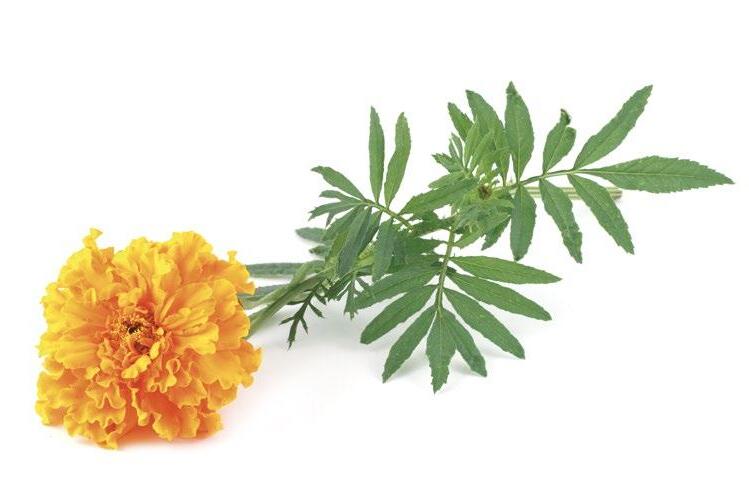
Currently it is possible to find the biofortified corn, which is a product obtained through genetic improvement, having in its composition modified β-carotene.
35 Egg quality aviNews International June 2024 | The science behind yolk color: how poultry feed can affect egg quality
period (days)
Figure 6: Changes in yolk coloration of layers (32 weeks old) fed different corn hybrids for 31 days. Adapted from Ortiz et al., (2021).
Recently, Ortiz et al. (2021) evaluated the use of a biofortified hybrid enriched in carotenoids for 32-weekold layers fed for 31 days of production.
The authors verified that the coloring of the yolk was more intense for birds fed as modified hybrid called as orange, compared to the corn hybrid common yellow and white, from the 4th day onwards receiving the experimental diet (Figura 6).
CONCLUSIONS
The color of the yolk is an attribute that consumers take into account when making a purchase, often looking for eggs with darker shells and/ or yolks, believing that this colorful product has more nutrients and is tastier.

The use of natural pigments is an alternative to intensify the coloration of the yolk of laying birds, and the studies carried out to date show that these pigments have a significant capacity to modify coloration, as well as conferring other advantages such as improving the health and intestinal integrity of the birds.
The science behind yolk color: how poultry feed can affect egg quality DOWNLOAD PDF
36 Egg quality aviNews International June 2024 | The science behind yolk color: how poultry feed can affect egg quality
Orange corn
Yellow corn
Experimental
Color score (DSM Yolk Color Fan) 12 10 8 6 4 2 0 0 1 2 3 4 5 6 7 8 9 10 11 12 13 14 15 16 17 18 19 20 21 22 23 24 25 26 31 30 29 28 27
White corn
New generation of Zucami aviaries
AVIARY VISION for LAYERS

AVIARY GREEN WAY for LAYERS
AVIARY GREEN START for REARING-BREEDING NEW WEBSITE
A
NOVEL POSTBIOTIC
THAT GENERATES AN ECONOMIC RETURN IN LAYERS
Across the globe, egg production is gaining popularity and importance, mainly fuelled by increasing egg consumption. However, there are some challenges that producers need to overcome to fulfil consumer demands and remain profitable.
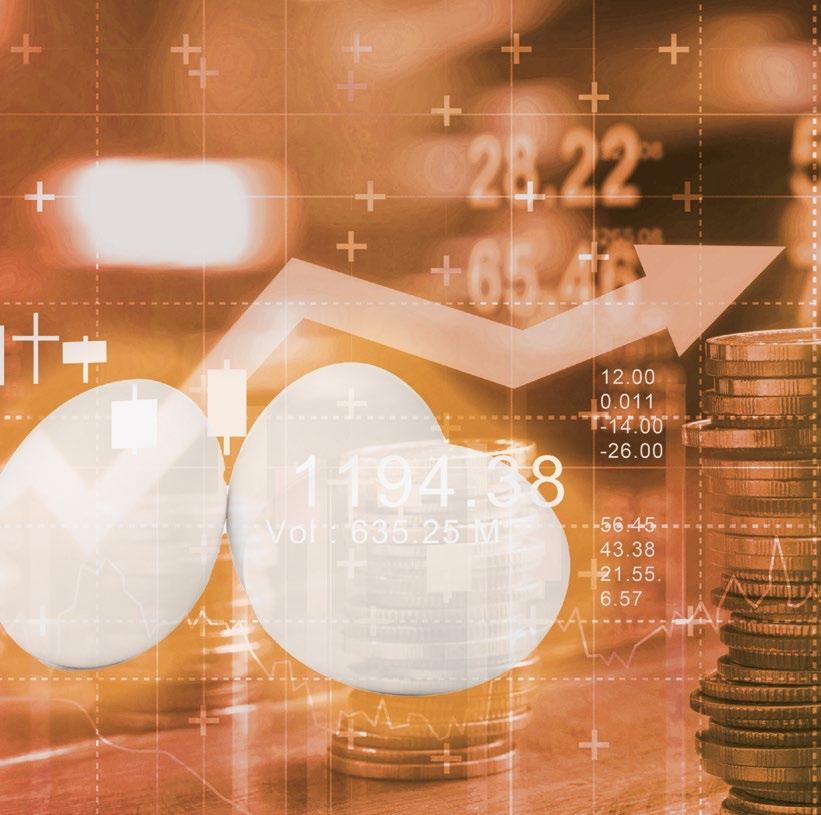

AO-BIOTICS® EQE,
38 Postbiotic aviNews International June 2024 | AO-Biotics® EQE, a novel postbiotic that generates an economic return in layers
BioZyme Technical Team
The most urgent challenges are related to:
Eggshell quality.
And productive life span.
Maintaining normal physiology and good health of the laying hen is essential to produce high-quality eggs for longer periods of time.

Dietary interventions like the feeding of fermented feeds, fibre, probiotics, prebiotics and postbiotics are acceptable means for influencing the gut microbiota and its metabolic activity.
In laying hens, the inclusion of postbiotics in the diet to maintain and improve productivity and egg quality has been researched. This research has led to the development and commercialization of a new product, AO-Biotics® EQE (Egg Quality Enhancer).
AO-Biotics® EQE is a fungal postbiotic produced using patent-pending technology and specifically indicated to improve the number of sellable eggs, egg mass and productive lifespan of laying hens.
De Juan et. al. (2021 and 2022) studied the effects of AO-Biotics® EQE on the performance and egg quality traits of hens from 15 to 43 and 18 to 65 weeks of age, respectively.
The results, along with numerous field trials under commercial conditions, demonstrated that the inclusion of AO-Biotics® EQE, on average:
Increased sellable eggs by 3%.
Increased egg mass by 2%.

Increased egg production by 3%.
Decreased mortality by around 34%.
39
aviNews International June 2024 | AO-Biotics® EQE, a novel postbiotic that generates an economic return in layers
Postbiotic
Do the benefits of adding AO-Biotics® EQE significantly outweigh the costs?
The short answer is yes.

Generally, the more eggs a layer operation can produce, the greater the profit potential.
Furthermore, high cumulative mortality leads to big economic losses.
To maximize profitability, egg producers must strive to optimize the productivity of their hens, increase the survivability rate and maintain or improve the eggshell quality, helping the animals produce more sellable eggs.
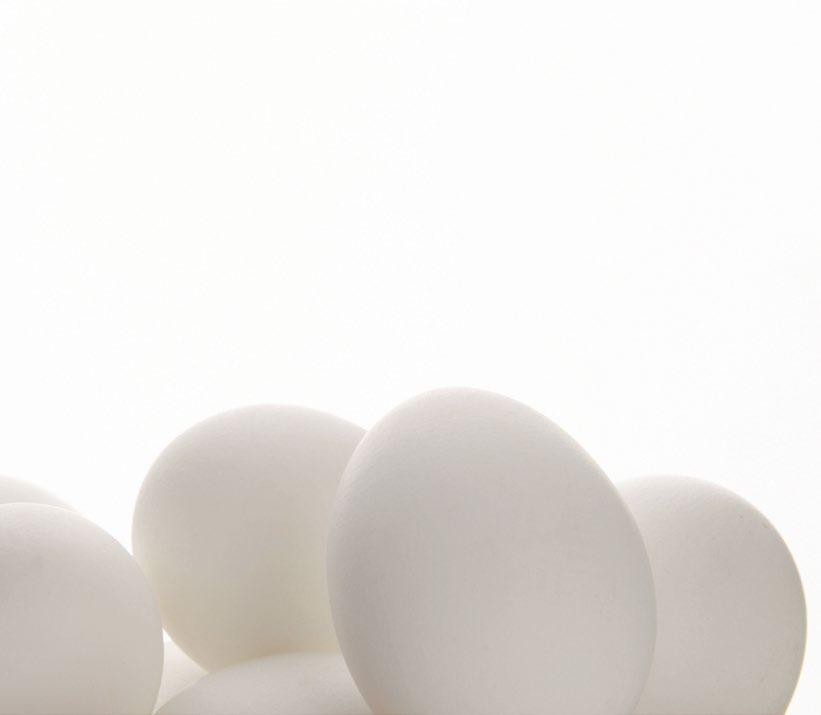
It is well-known that egg production is influenced by a variety of factors, including the quality of feed, the environment in which the hens are kept and the health of the flock.
Those factors can impact:
Egg production,
Egg size,
Egg quality, Which can, in return, impact revenue and profitability.
To achieve this, producers need to apply a high-quality management system, which might include the incorporation of a well-proven postbiotic such as AO-Biotics® EQE.
BioZyme®, the producer of AO-Biotics® EQE, has created a calculator to help producers evaluate the potential and advantages of incorporating AO-Biotics® EQE into their feeding programs.
40 Postbiotic aviNews International June 2024 | AO-Biotics® EQE, a novel postbiotic that generates an economic return in layers
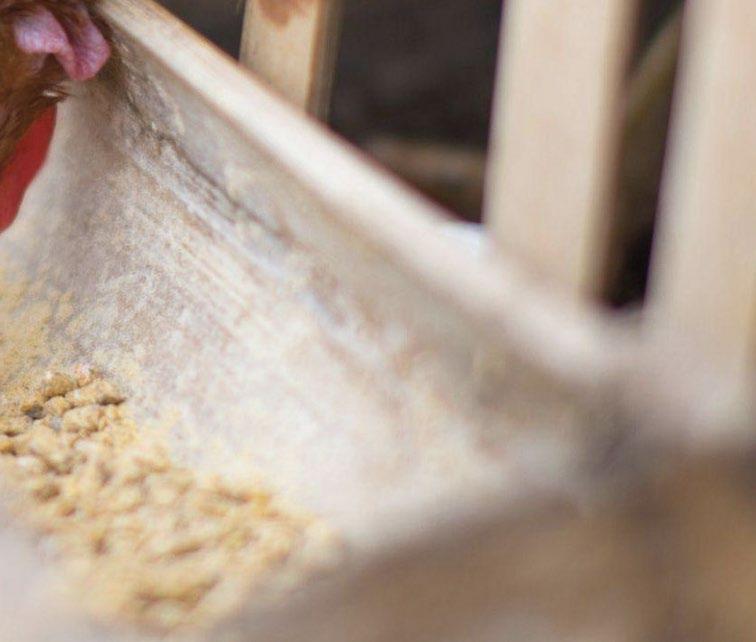
This tool considers the most relevant parameters for egg producers when evaluating the profitability of their operation, including:
Number of laying hens in the barn.
Pullet price and the weeks of age of pullets when entering into production.
Weeks of age at the end of the laying cycle.
Expected cumulative mortality of the flock.
Feed cost ($/MT).
Average daily feed intake (g/d).
Rate of production (average % along the production cycle).
Number of eggs laid per hen on the production cycle.
Egg price/cost per egg or cost per kg.
It also considers the cost of adding AO-Biotics® EQE to the diet. At the recommended inclusion rate of 50 g of EQE/MT of feed, the total cost will represent less than a 1% increase in the feed cost.
By filling the information described above in the calculator, we can see that the expected benefit of adding AOBiotics® EQE (more productive shelf life, more egg mass and more salable eggs) to the feeding program, will provide a significant return on investment (ROI).
A practical example would be as follows:
600,000 hens entered into the production barns at 18 weeks of age.
Production cycle up to 100 weeks of age.
Cumulative mortality of 6%.
Average daily feed intake of 115g of feed/d.
Average egg production of 88%.
An expectation of 450 eggs/hen at 100 weeks of age with an average egg weight of 62g.
With the parameter exposed above, 36,000 hens will leave the production.
41
aviNews International June 2024 | AO-Biotics® EQE, a novel postbiotic that generates an economic return in layers
Postbiotic
The first advantage of AO-Biotics® EQE is an improvement in the livability of the flock, reducing the cumulative mortality on average by 34%.
The cumulative mortality would drop to 4.0% (12,000 hens more in the operation producing eggs for a longer time).
The second advantage is more egg mass, together with an improvement in the persistence of egg production over time.
Improving the productivity and the productive life span of the flock will be reflected in an improvement in the number of sellable eggs (3% more).
In this case, the improvement in sellable eggs will mean 14 more eggs per hen in production.
Considering this improvement in combination with the savings due to the increased productive lifespan of layers, the producers can expect an ROI of more than 10:1.
Are you egg-cited yet about what AO-Biotics® EQE is worth?
If so, visit biozymeinc.com/additive/eqe/ to learn more about incorporating AO-Biotics® EQE into your operation.
ACCESS TO THE WEBSITE
You can also calculate your own ROI based on your input costs using our online AO-Biotics® EQE Economic Return Calculator or by contacting one of our representatives to help you do the economic evaluation.
ACCESS TO THE CALCULATOR
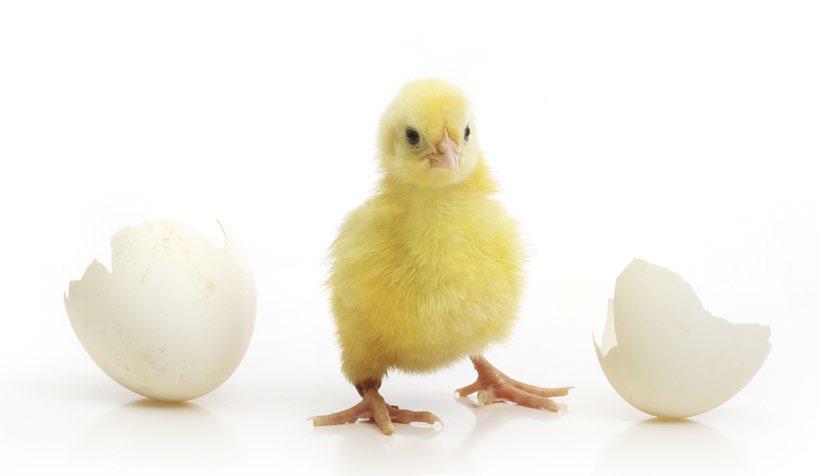
References upon consultation with the author
AO-Biotics® EQE, A novel postbiotic that generates An economic return in layers DOWNLOAD PDF
1
42 Postbiotic aviNews International June 2024 | AO-Biotics® EQE, a novel postbiotic that generates an economic return in layers
2

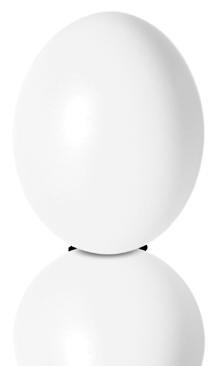


SIMPLE EGGONOMICS Get more sellable eggs, egg mass and productive life span. Care that comes full circle Biozymeinc.com MADE IN THE USA
ESTIMATING VARIATION IN MIXED FEED
Gene Pesti1,2, Lynne Billard2 and Edgar Oviedo3
1 University of Georgia
2 Poultry Hub Australia
3 North Carolina State University
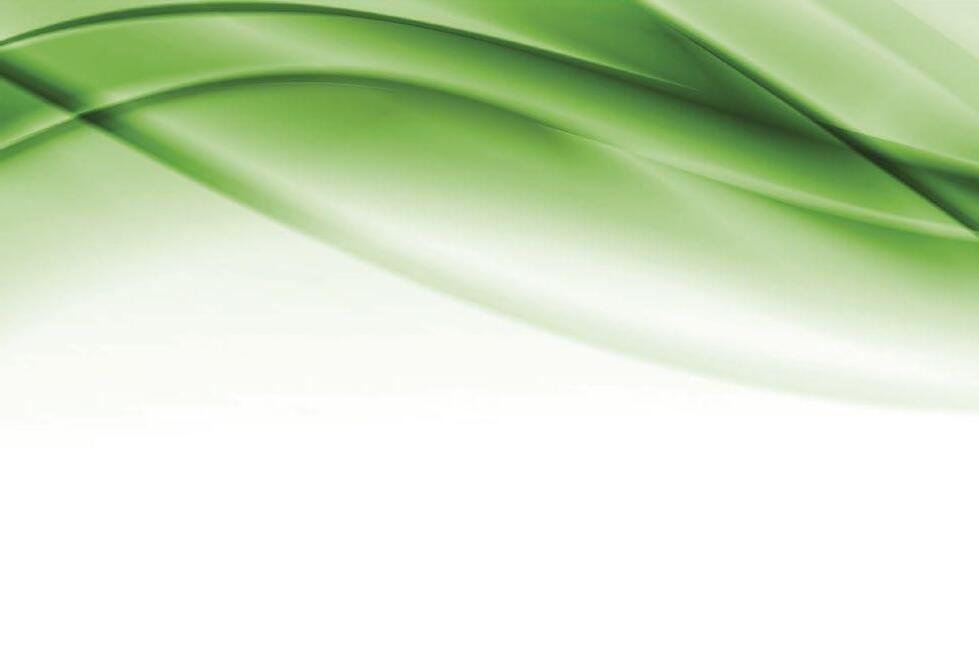


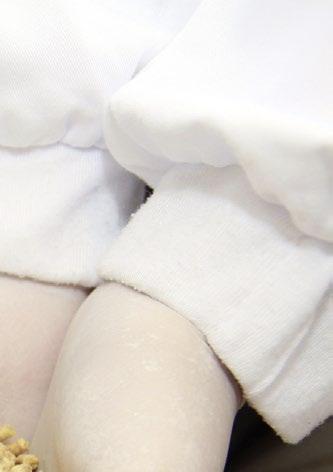
INTRODUCTION
A major goal of poultry nutritionists and feed millers is to ensure that each bird receives the nutrients it needs daily. To do that, the feed must be fairly uniform and contain adequate amounts of each required nutrient.
The profitability of poultry production is greatly influenced by feed ingredients’ nutrient and energy variability.
Live flock performance, flock uniformity, and consistency of zootechnical results can be impacted by protein variability in feed ingredients.
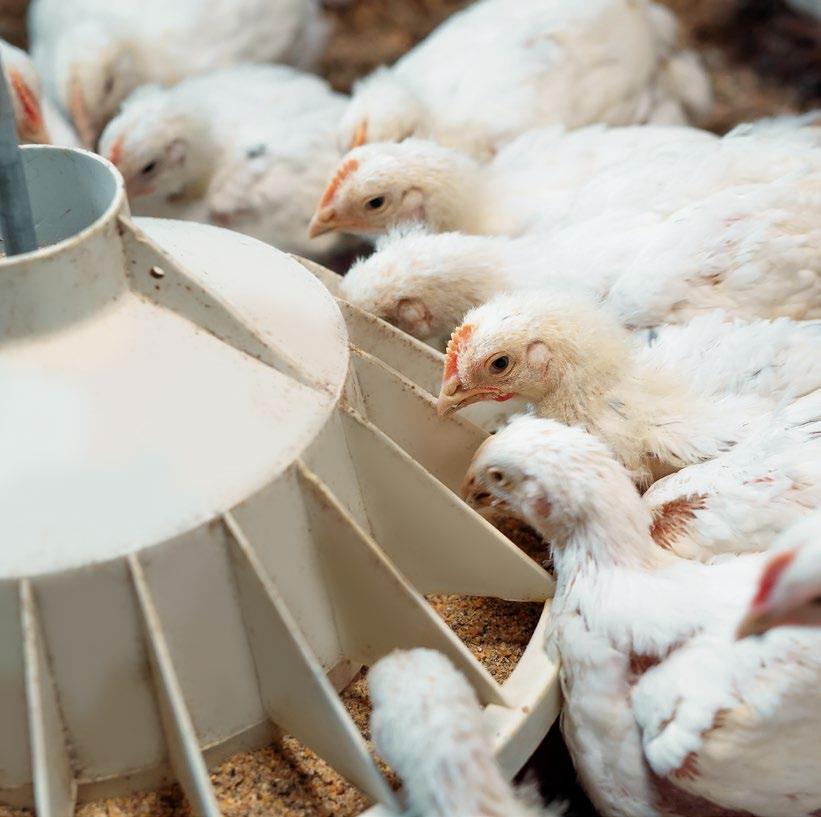
44 aviNews International June 2024 | Estimating Variation in Mixed Feed Nutrition
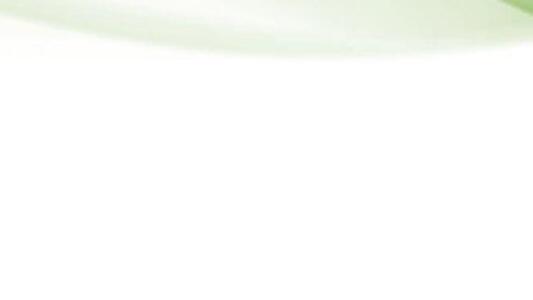
Amy Moss and her team (2021) at the University of New England in Australia showed that if you overestimate the amount of nutrients in feedstuffs, you could lose 63% of your profit or $635,100 for every million broilers.
Small variations in energy, nutrient density, and amino acid digestibility can also impact egg production, egg weight and mass, feed efficiency, energy intake, BW, and egg production profitability.


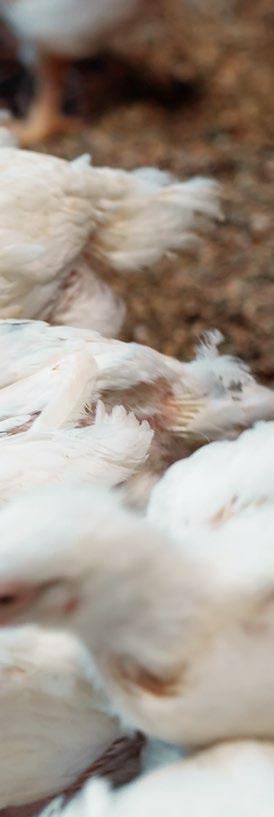
The variability in feed ingredients is caused by raw ingredients, sampling, and analysis, according to Moss et al. (2021).
FEEDSTUFF VARIABILITY
The composition of feed ingredients is variable due to genetics, environmental factors, and processing conditions postharvest or during production.
For plant products, different batches are derived from different cultivars, grown under different climatic and fertilization conditions, and then processed and stored differently.
Different batches of animal by-products also differ, mainly because of variations in raw materials and how they are processed.
Once feeds are mixed, they must be adequately sampled to ensure that batches contain what they are expected to. Because variation is inherent in different batches with the same ingredient formula, multiple samples of each batch are necessary to estimate the mean.
When various proportions of feed ingredients are mixed, samples have properties blended from all the incorporated ingredients.
The variances of mixtures are calculated as follows from the variances of the ingredients.
Suppose Xi is a feed ingredient that follows a Normal distribution with the mean µi and variance σ2 i, N (μi,σi2), i = 1, . . . , k, and suppose Xi’s (feed ingredient nutrient composition) are independent. Then:
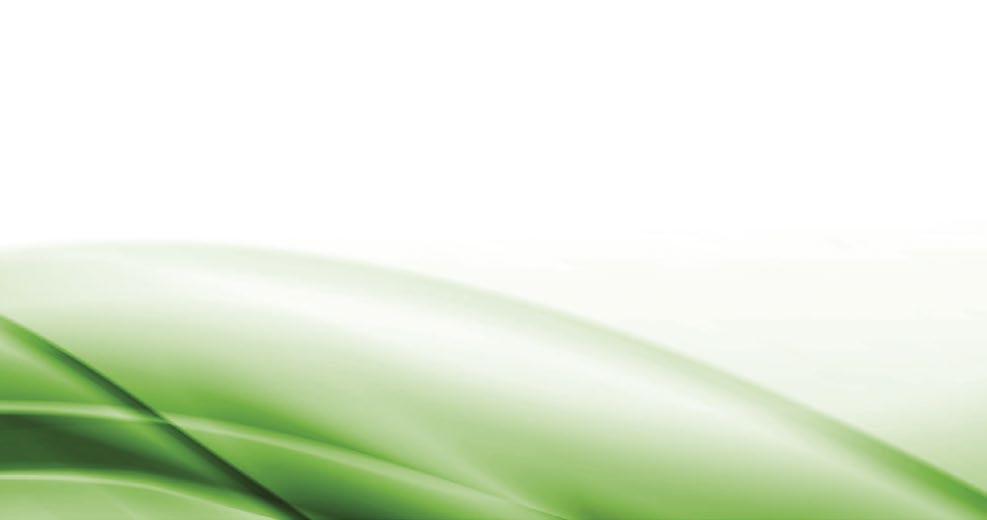
Follows a Normal distribution with mean µ and variance σ2, N(µ,σ2), where:
Y= α1 X1 +...+ αk Xk = ∑= 1 aiXi μ= a1μ1 +... + ak μk = ∑=₁ αi μi σ2= a12 σ12 +... + ak2 σk2= ∑=ai2 σi2 k i k k i i = 1 45 Nutrition aviNews International June 2024 | Estimating Variation in Mixed Feed
How variable are nutrients in a feed?
The Microsoft Excel workbook called “FeedVariation.xlsx” was designed by Dr. Pesti to use these formulas. It is available from the Poultry Hub Australia web page under “Research Resources”
EstimatingVariation In Mixed Feed
Figure 1 shows a portion of the “Protein Example” worksheet. The ingredients, with their average protein levels and standard deviations, are from samples collected from Australian producers and compiled in the Australian Feed Ingredient Database (AFiD).




46 aviNews International June 2024 | Estimating Variation in Mixed Feed Nutrition

In the right center portion of Figure 2 are some formulas for feeds for different classes of chickens and turkeys, and there are more on the actual worksheet.
At the bottom of the worksheet are the calculated averages and standard deviations of each feed's expected crude protein levels, highlighted in yellow.
You can download the workbook and click on each cell to see how the calculations were consistent with Equation [3] above.

If many batches of Broiler Starter, fed generally from 0 to 10 days, were mixed from random samples of Australian ingredients, the average crude protein levels of the feeds would be expected to be 230 g/kg CP. Half of the batches would be expected to contain more and half less than 230 g/kg CP.

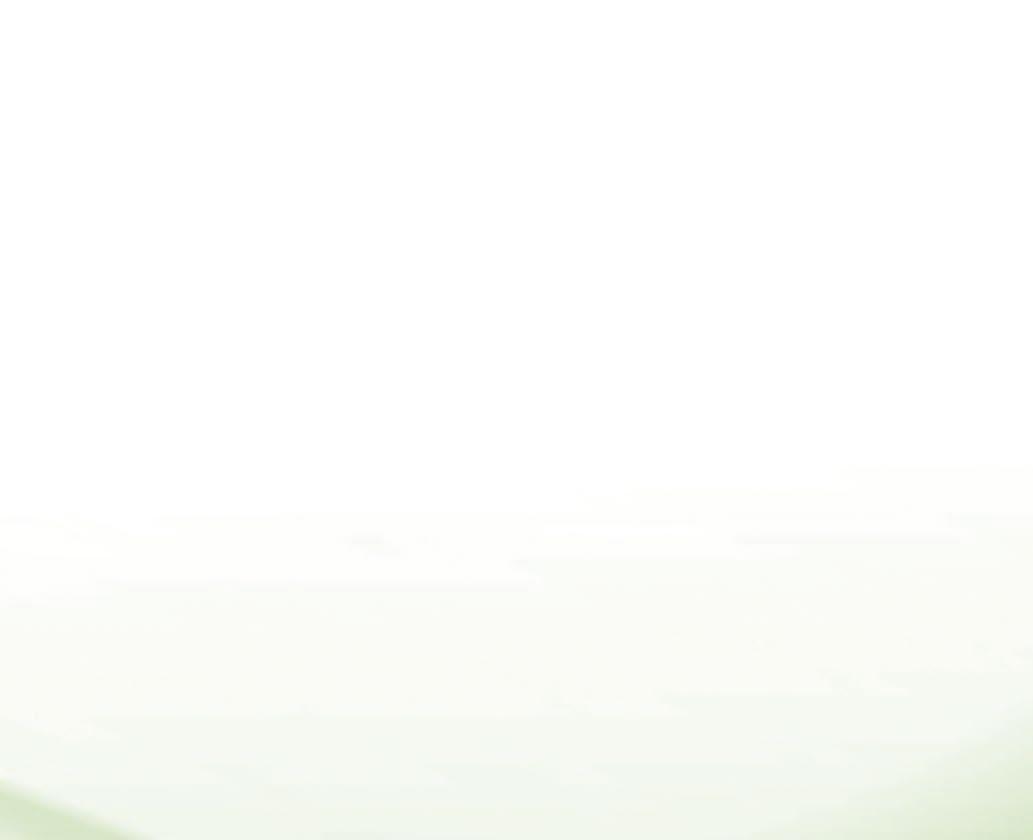

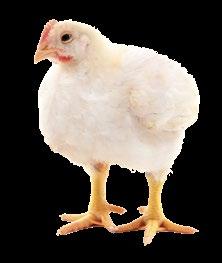
47 Nutrition aviNews International June 2024 | Estimating Variation in Mixed Feed
The normal distribution (Figure 3), defined by the mean and standard deviation, could be used to estimate the distribution of batches of feed.

Thirty-four percent of batches of this feed would contain between 230 and 230 - 4.48 = 225.52 g/kg CP; 13.5 % of batches of feed would contain between 225.52 and 225.52-4.48 = 221.04; and 2.5 % of batches of feed would contain less than 221.04 g/kg CP.
Poultry producers often purchase ingredients from the same supplier, so the variation in some ingredients may be less than expected from the AFiD database.
Nonetheless, this analysis points out the importance of monitoring ingredients to decrease variation as much as possible
Limiting variation in mixed feeds is essential when the producer is feeding their own birds, but even more important when the producer sells feed, and the customer expects each batch to have a specified minimum amount of each nutrient.
Using average values may not be acceptable to the customer.
Analytical variability and NIRS
Monitoring ingredient variation indicates more analysis and more use of the labs.
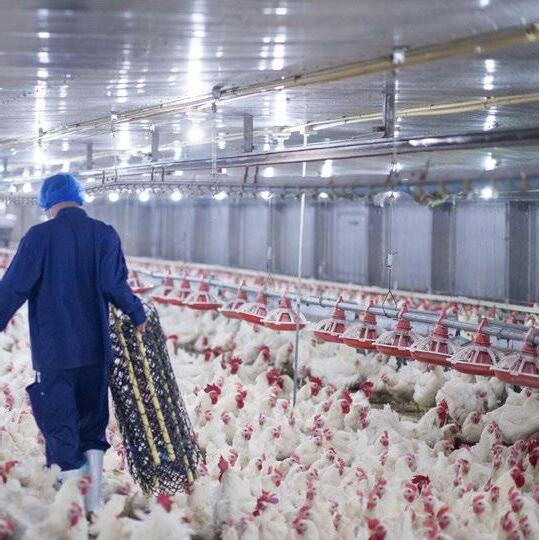
However, the analytical variability among laboratories has been as significant, or in some instances even more remarkable, than the variability in nutrient variability attributed to corn or soybean meal sources.
Consequently, properly sampling feedstuffs and comprehensive and precise analysis of nutrient content ought to gain greater significance.
Energy content, CP, and AA digestibility are rarely determined for distinct batches of feedstuffs in feed mills.
Energy values are a bigger problem because they are always estimated using prediction equations that depend mainly on the proximate analysis results and may underestimate metabolizable energy (ME).
There is high variability between apparent ME and apparent ME corrected by nitrogen.
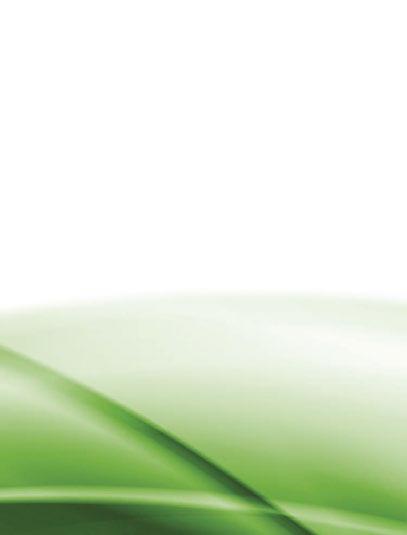
-3σ -2σ -σ μ +σ +2σ +3σ 68.2% 96.8% 99.7%
Figure 3. The Normal Distribution
48 aviNews International June 2024 | Estimating Variation in Mixed Feed Nutrition
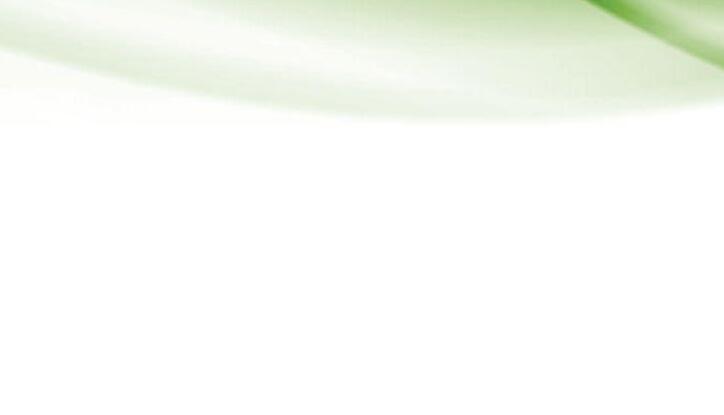
NIRS
For more than thirty years, the feed industry has had an alternative to tracking nutrient composition in feed ingredients. near-infrared reflectance spectroscopy (NIRS), but not everyone agrees with using the data from NIRS. Wet chemistry results are still considered the most reliable in many places.

The NIRS analysis offers several advantages, including:
Rapid scanning of samples and results provided in minutes.
A small amount of one sample is necessary to obtain several nutrient analytes, energy content, and digestibility coefficients simultaneously.
Low cost.
Highly reproducible results regardless of the geographical location where the sample was collected.
Minimal or no sample preparation is required.
Equipment can be placed directly in the feed mill or in-line during feedstuff processing.
NIRS can be portable.
These factors make NIRS analysis more sustainable than the wet chemistry analysis.
regresses chemical or physical analysis results with NIRS spectra to estimate proximate analysis values, total AA, starch, and other nutrients and antinutrients.

Estimating Variation in Mixed Feed
In contrast, direct NIRS calibration uses samples of feed and feces obtained from animal experiments. Direct calibrations incorporate in-vivo data concerning the numerous interactions between the feed and the animal that impact final nutrient utilization, AME, AMEn, and AA digestibility.
Numerous research groups have evaluated the precision and accuracy of NIRS calibration models for predicting feedstuff nutritional value, yielding results comparable to those obtained through lab wet chemistry and in-vivo approaches.
CONCLUSION
It is recommended that the feed industry starts applying the information obtained with diverse NIRS models available in the market to better understand the variability in macronutrients, energy, and starch and fiber components.
A better understanding and control of feedstuff variability can help us to be more precision in feed formulation and poultry production.
DOWNLOAD PDF 49 Nutrition aviNews International June 2024 | Estimating Variation in Mixed Feed
PROBIOTICS, PREBIOTICS, AND
PHYTOGENIC SUBSTANCES FOR OPTIMIZING GUT HEALTH IN PULTRY - PART II
Juan D. Latorre1, Sakine Yalçin2, Guillermo Tellez-Isaias1, Hafez M. Hafez3 et al.
1Department of Poultry Science, University of Arkansas, U.S.A.
2Department of Animal Nutrition and Nutritional Diseases, Faculty of Veterinary Medicine, Ankara University, Turkey
3Institute of Poultry Diseases, Faculty of Veterinary Medicine, Free University of Berlin, Germany
In modern animal production systems, it is essential to minimize the impacts of chronic inflammation and excessive stress so that chickens can use their energy for growth rather than defense.
Although there is no “magic ball” to prevent the multifactorial conditions associated with chronic stress, numerous studies have shown that alternative products, such as probiotics, targeted microbes, prebiotics and phytochemicals, help improve gut microbial balance, metabolism and intestinal integrity.

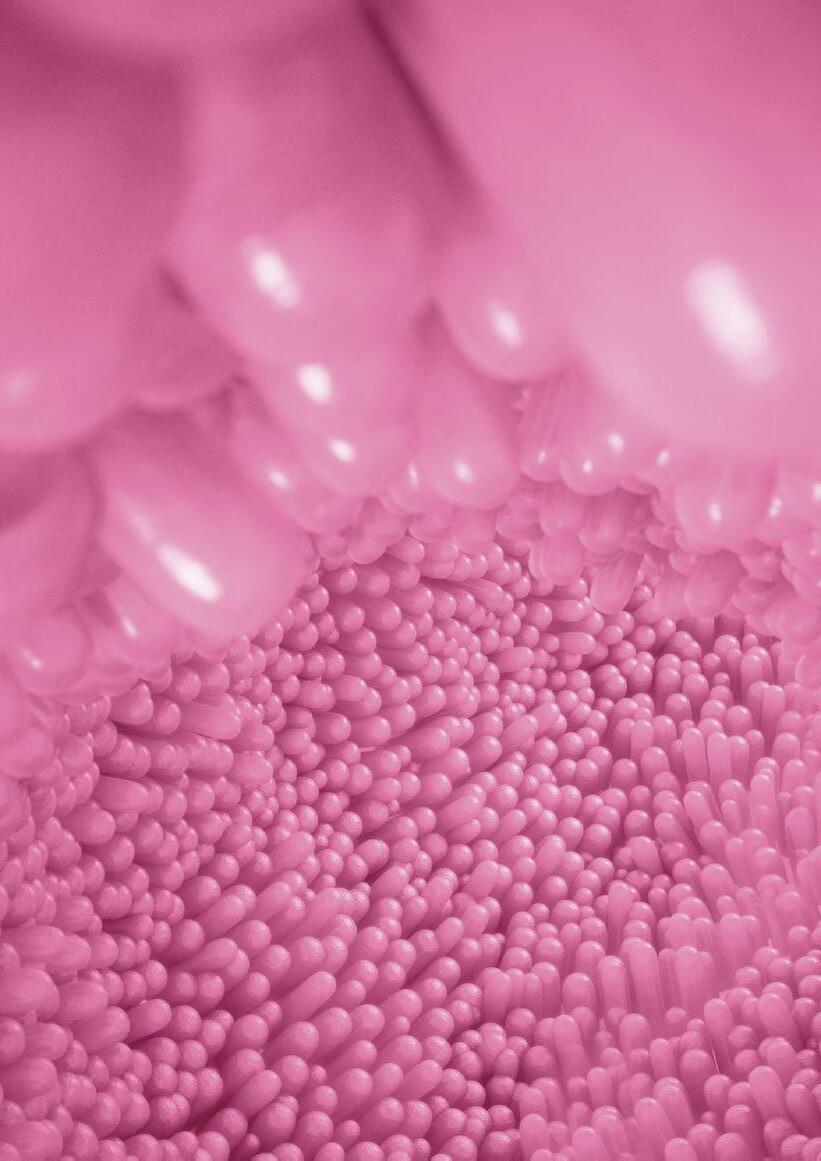
50 Nutrition aviNews International June 2024 | Probiotics, Prebiotics, and Phytogenic Substances for Optimizing Gut Health in Poultry - Part II
PROBIOTICS
Probiotics in adequate doses
intestinal microbial balance, colonization resistance to infection and immune responses.
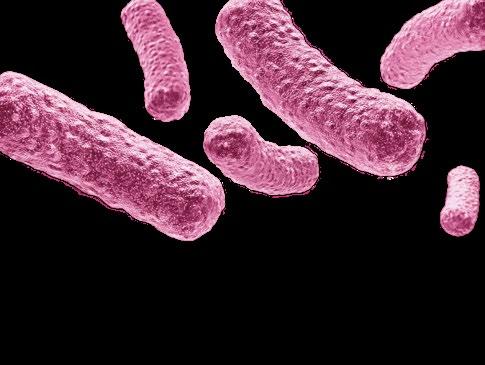
Lactobacillus spp., Streptococcus thermophilus, Enterococcus faecalis and Bifidobacterium spp. are the most used lactic acid bacteria (LAB) in probiotic formulations. Possible mechanisms of action include:
Maintain a healthy balance of bacteria in the intestine by competitive exclusion, that is, in a process by which beneficial bacteria exclude potential pathogenic bacteria through competition via adherence sites in the gut and nutrients.
Prevent bacterial overgrowth in the intestine.
using probiotics.
A commercial probiotic based on acid bacteria was recently studied for use in poultry. Using this LAB culture, extensive laboratory and field research has shown increased resistance to Salmonella infections in chickens and turkeys.
Several probiotic strains improved animal performance and could be used as potential alternatives to antibiotics.
1.
action of probiotics against the presence of pathogens at the intestinal level.
Intestinal micro ora
Probiotic organism
Pathogenic organism
Immune cell
Competition for
Direct antagonism Immune stimulation
Competition for nutrients
adhesion spaces
Figure
Mechanism of
51 aviNews International June 2024 | Probiotics, Prebiotics, and Phytogenic Substances for Optimizing Gut Health in Poultry - Part II Nutrition
Higgins et al. reported that probiotics reduced idiopathic diarrhea in commercial turkey rearing houses based on published experimental and commercial trials. In addition, the probiotic blend was shown to improve yield and reduce production costs in large-scale commercial experiments.
Birds treated with probiotics demonstrated variations in gene expression related to the nuclear factor kappa B (NF--B) complex, according to recent microarray research.
These findings indicate that specific probiotic cultures can sometimes be an attractive alternative to traditional antibiotic therapy.
Long-term probiotic requirement
Commercial probiotics that are long-lasting, cost-effective and resistant to the heat pelleting process are urgently needed to promote compliance and wider use.
Some probiotic products contain bacterial spore formers, typically of the genus Bacillus. Some (but not all) have been shown to prevent certain gastrointestinal problems.
The variety of species used and their multiple uses are astounding.
These media demonstrate the benefit that some Bacillus spore isolates are the most heat-tolerant spores known and can therefore also be used in circumstances of intense heat.
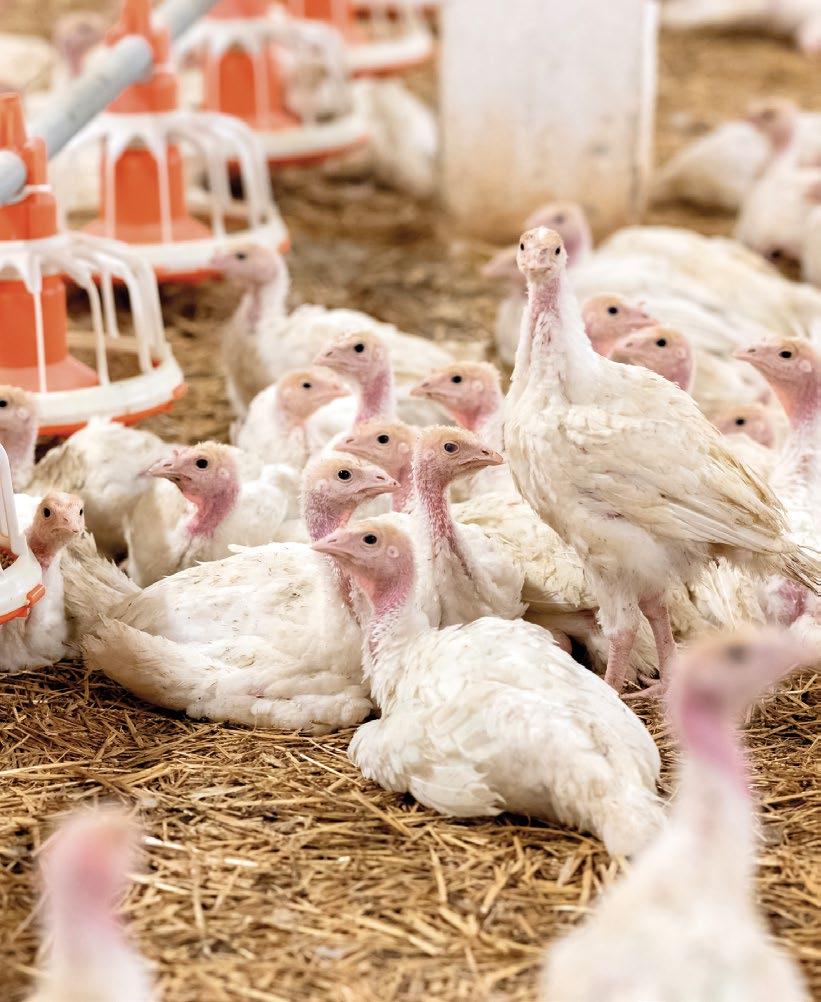
Therefore, spores of selected Bacillus strains have been used as reliable direct feeding microorganisms (DFMs) in animal production due to their ability to withstand adverse environmental conditions and long storage periods.


52 aviNews International June 2024 | Probiotics, Prebiotics, and Phytogenic Substances for Optimizing Gut Health in Poultry - Part II Nutrition
Improving amplification and sporulation efficiency
Field trials suggested that a spore isolate of Bacillus subtilis is effective as a commercial probiotic based on lactic acid bacteria in reducing Salmonella spp. Further research may reveal more potent isolates or combinations of isolates.
Some of these environmental Bacillus isolates have been tested In vitro for antibiotic activity, heat stability and population growth.
Improving amplification and sporulation efficiency is critical to obtain industrial approval of a food-based probiotic for ante mortem intervention of foodborne pathogens.
Improved vegetative growth and sporulation rate can lead to new efficiencies for commercial amplification and the creation of cost-effective products with very high spore counts.
Direct feeding microorganisms
Bacillus-DFM has also been shown to prevent gastrointestinal tract disorders and provide a variety of nutritional benefits for both animals and humans. In vitro and in vivo studies have shown that 90% of B. subtilis spores germinate in different segments of the GIT within 60 minutes in the presence of feed.
In addition, by using different in vitro poultry diets (diets based on rye, wheat, barley and oats).
Where the inclusion of selected Bacillus-DFM candidates that produce a different set of extracellular enzymes.
It resulted in a significant reduction in both digesta viscosity and in the proliferation of Clostridium between control and Bacillus-DFM supplemented diets.
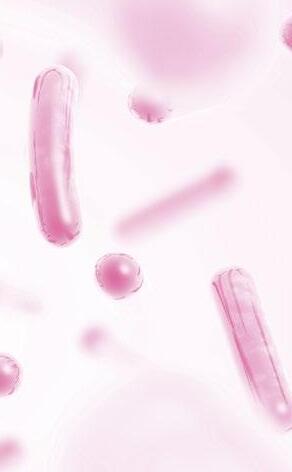
High concentrations of NSP
Increased digesta viscosity and longer feed passage time caused by high concentrations of soluble non-starch polysaccharides (NSP) in poultry diets influence the intestinal bacterial population.
Therefore, exogenous carbohydrases (xylanase, glucanase, mannanase, galactosidase and pectinase) are used as feed additives in an attempt to reduce the negative impact of these anti-nutritional factors.
Interestingly, supplementation with Bacillus-based DFM was shown to improve growth performance, digesta viscosity, bacterial translocation, microbiota composition and bone mineralization in broilers and turkeys fed a rye-based diet.

These differences may be due to the lower amount of substrates available for bacterial growth, which resulted in less intestinal inflammation and bacterial translocation when intestinal viscosity was reduced by including the candidate DFM, implying that the supplemented groups absorbed more nutrients at the brush border of the intestine.
53 aviNews International June 2024 | Probiotics, Prebiotics, and Phytogenic Substances for Optimizing Gut Health in Poultry - Part II Nutrition
The significant improvements in performance observed in turkeys and broilers fed the Bacillus-DFM supplemented diet compared to the unsupplemented control group suggest that:

Increase nutrient absorption;
Enzyme production from the combined Bacillus spp strains used as DFM can:
Promote growth performance and a more efficient feed conversion rate;
In addition to improving intestinal integrity.
DFM was also shown to significantly reduce the severity of experimental Salmonella enterica subspecies enterica serotype Enteritidis and aflatoxicosis infections.
In one study, bacterial translocation, intestinal viscosity, microbiota composition and bone mineralization in broilers were shown to be affected by rye energy use. However, Bacillus-DFM reverses the negative effects of high NSP diets in poultry.
In addition, broiler and poult performance improved with the inclusion of DFM in reduced-fat diets, which was associated with higher energy digestibility as measured by apparent metabolizable energy and corrected

PREBIOTICS
Prebiotics are a relatively recent concept, arising from the idea that non-digestible food elements (e.g., non-digestible oligosaccharides) are selectively fermented by bacteria known to benefit intestinal function.
Proliferation of endogenous lactic acid bacteria and bifidobacteria in the gut has been shown to benefit host health.
Prebiotics can help bifidobacteria and lactobacilli proliferate in the gut, improving the microbial balance of the host.
Prebiotics, unlike probiotics, promote intestinal bacteria that have acclimated to the environment of the gastrointestinal tract.
Healthy gut microbiota can increase absorption, protein metabolism, energy metabolism, fiber digestion and intestinal maturation in leptin- resistant mice.
Prebiotics have also been shown to enhance host defense and reduce pathogen-induced mortality in birds.
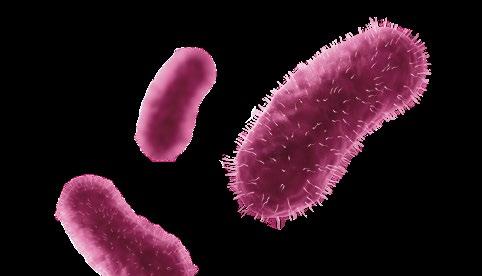
54 aviNews International June 2024 | Probiotics, Prebiotics, and Phytogenic Substances for Optimizing Gut Health in Poultry - Part II Nutrition

Reduction of pathogens
The ability of prebiotics to increase the amount of LAB in the intestine can help in the competitive exclusion of pathogens from the gastrointestinal tract of birds.
Meanwhile, the increased intestinal acidity caused by prebiotics may also help reduce infections in the intestine of chickens.
Prebiotics have also been shown to increase the immune response in chickens, resulting in faster clearance of infection.
For example, prebiotics can interact directly with intestinal immune cells or interact indirectly with immune cells through colonization of beneficial bacteria and preferred microbial metabolites.
Prebiotics can function similarly to probiotics to support intestinal health in chickens. The most commonly used prebiotics in poultry are:
Inulin; Fructooligosaccharides (FOS);
Mananooligosaccharides (MOS);
Galactooligosaccharides (GOS);
Soy oligosaccharides (SOS);

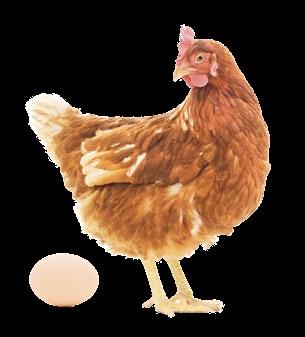
Research on prebiotics in poultry has been conducted since 1990, resulting in a large library of studies. Prebiotics in broiler feeds have been shown to increase lactobacillus levels.
Some studies on the microbial effects of prebiotic supplementation found an increase in bifidobacteria and a decrease in clostridia. In other studies, Salmonella and coliforms were reduced.
The use of prebiotics has also been shown to increase intestinal villus height in broiler diets, depending on intestinal morphology. Meanwhile, detoxification and elimination processes are enhanced by a healthy population of these helpful bacteria in the digestive tract.
Xylooligosaccharides (XOS);
Pyrodextrins;
Isomaltooligosaccharides (IMO); and Lactulose.
Prebiotics have also been shown to improve shell and bone quality, increase mineral utilization and improve performance in laying hens.
55 aviNews International June 2024 | Probiotics, Prebiotics, and Phytogenic Substances for Optimizing Gut Health in Poultry - Part II Nutrition
Benefits of using prebiotics
A frequently used prebiotic concerns Aspergillus oryze, which is marketed as Aspergillus meal (AM). AM includes 16% protein and 44% fiber and can be used to improve performance in commercial poultry diets with low protein levels.
The mycelium or A. oryzae also contains betaglucans, FOS, chitosan, and MOS. This substance also benefits chickens by promoting growth, most likely to improve absorption and digestibility of feed ingredients.
Beta-glucan is a potent immunity booster. This unique substance affects the intestinal villi and helps the body fight viral and bacterial invaders.
Another study found that feeding hatchling turkey chicks MA prebiotics for 30 days increased body weight and improved feed conversion compared to feeding a basal control diet.
Interestingly, chicks fed MA prebiotics in the diet had lower protein and energy content in the ileum than control chicks, indicating increased digestion and absorption of those nutrients.
Fructooligosaccharides (FOS) have been shown to improve intestinal absorption of calcium and magnesium, as well as bone mineral concentrations.
Several studies have shown that probiotics can reduce Salmonella colonization in chickens.
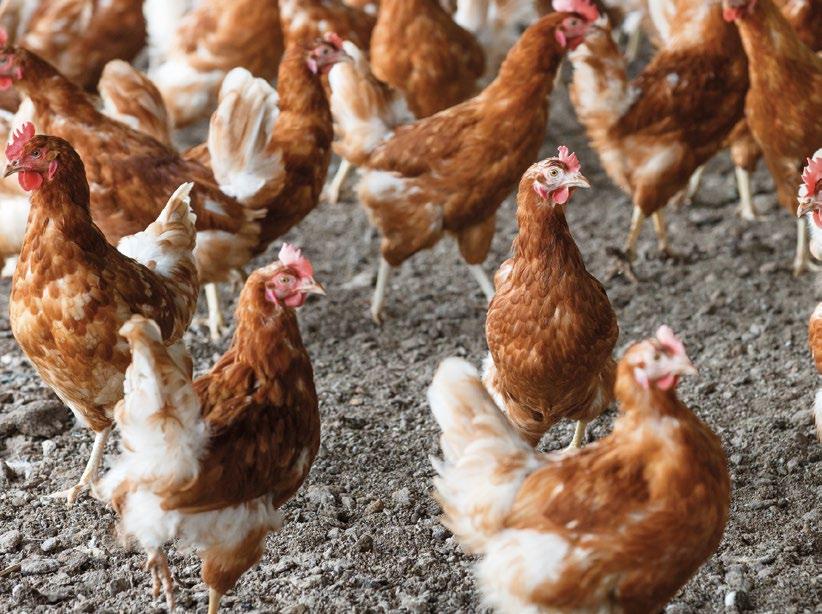
MOS bind to toxin active sites and defend the GIT against invasion.
FOS and chitosan are non-digestible carbohydrates that are easily fermented by the intestinal flora.
Dietary Aspergillus meal (AM) was shown to alter intestinal morphometry in turkey poults. It increased the number of acid mucin cells, neutral mucin cells and sulfomucin cells in the duodenum and ileum.
In addition to the height and surface area of the villi in the duodenum and ileum of the newly hatched poults compared to the control.
Finally, chitosan is a natural biopolymer created by the deacetylation of chitin, the main component of fungal cell walls and arthropod exoskeletons. As noted above, chitosan has several benefits, including antimicrobial and antioxidant properties.

Also, chitosan has shown promising applications in agriculture, horticulture, environmental sciences, industry, microbiology and medicine. In addition, many studies have used chitosan as a mucosal adjuvant, increasing IgA levels.
56 aviNews International June 2024 | Probiotics, Prebiotics, and Phytogenic Substances for Optimizing Gut Health in Poultry - Part II Nutrition
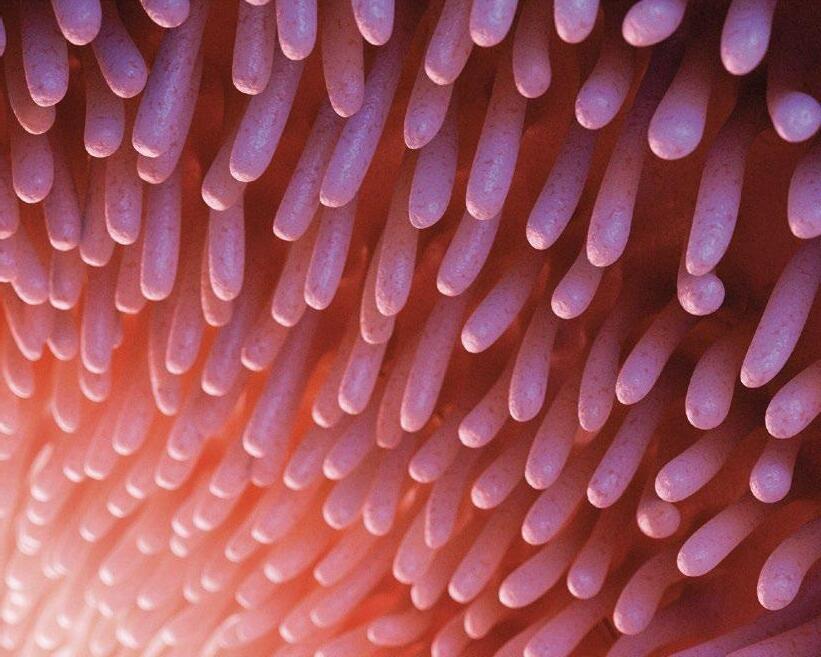
In another study, the efficacy of 0.2% AM in the diet against horizontal transmission of Salmonella spp. was evaluated in turkeys and chickens. This study found that feeding 0.2% AM to turkeys and broilers reduced horizontal transmission of Salmonella Enteritidis and Typhimurium by reducing overall colonization levels.
The reduction of Salmonella colonization can be attributed to a synergistic effect of beta-glucan, MOS, chitosan, and FOS found in the mycelium of Aspergillus oryzae.

Yalçın et al. reported that the cell wall of yeast derived from baker’s yeast was an effective prebiotic feed additive for broiler chickens due to increased growth performance, increased humoral immune response and reduced abdominal fat.
In another study conducted with laying hens, Yalçın et al. concluded that the yeast cell wall had beneficial effects in the production of low-cholesterol eggs and an improvement in humoral immune response.
Competitive exclusion
Ammonia reduction
Vitamin production and intestinal pH maintenance
Epithelial barrier integrity
Antimicrobial activity
Immunomodulation (simulation/tolerance)
Enzyme production
SYMBOTICS
When a combination of prebiotics and probiotics are used, they are called synbiotics and have the ability to further enhance the viability of probiotics. Probiotics, prebiotics and synbiotics are now widely used throughout the world. In the next section, we discuss the role of synbiotics in digestive physiology and poultry production.
Role of symbiotics in poultry production
Immediately after hatching, birds must switch from endogenous energy - the lipids in the yolk - to energy from an exogenous carbohydrate-rich diet. During this vital period, the size and morphology of the intestine change dramatically. Changes in epithelial cell membranes alter the mechanical interface between the internal environment of the host and the luminal contents.
Diversity and balance of microbiota
Studies on nutrition and metabolism of early growth in chicks can help to optimize the nutritional management for optimal growth.
The end products digested by symbiotic intestinal microorganisms can modify not only intestinal dynamics, but also various physiological systems.
The multiple roles of synbiotics in digestive physiology are summarized in Figure 2.
Probiotic Prebiotic
Figure 2. The role of symbiotics in digestive physiology.
57 aviNews International June 2024 | Probiotics, Prebiotics, and Phytogenic Substances for Optimizing Gut Health in Poultry - Part II Nutrition

PHYTOGENIC ADDITIVES FOR BALANCED FOODS
Phytogenic feed additives (PFA) are classified as sensory and flavoring compounds according to European Union legislation (EC 1831/2003).
PFA has been suggested to increase growth performance, nutrient digestibility and intestinal health in poultry.
Currently, PFA are used in poultry and swine feeding programs. The Lactobacillus spp count in the cecum increased when 75 mg/ kg red ginseng root powder was added as a supplement.
Several commercial products are based on herbs such as:
These phytogenic substances are promoted, due to their safety profiles and qualities to improve animal performance and health, through the following effects:
Improved digestibility;
Antimicrobial activities;
Anti-inflammatory and antioxidant effects;
Stabilization of intestinal microbiota;
Improvement of animal characteristics; and
Reduction of environmental emissions.

In addition to pharmacological effects, recent studies indicated that phytogenic substances modulate the intestinal microbiota, that is, increase Firmicutes, Clostridiales, Ruminococcaceae and Lachnospiraceae.
Anise seeds (Pimpinella anisum); Melissa leaves (Melissa officinalis);
Caraway seeds (Carum carvi); Oregano leaves (Allium cepa);
Cinnamon bark (Cinnamomum verum); Oregano leaves (Origanum vulgare);
Chamomile flowers (Matricaria recutita); Peppermint leaves (Mentha piperita);
Citrus peel (Citrus sp); Rosemary leaves (Rosmarinus officinalis);
Clove buds (Syzygium aromaticum); Sage leaves (Salvia officinalis);
Fennel seeds (Foeniculum vulgare); Thyme leaves (Thymus vulgaris); and
Garlic bulbs (Allium sativum);
Ginger rhizome (Zingiber officinale);
Valerian root/rhizome (Valeriana officinalis).

58 aviNews International June 2024 | Probiotics, Prebiotics, and Phytogenic Substances for Optimizing Gut Health in Poultry - Part II Nutrition

ENTEROTYPES BIOLOGICAL ACTIVITIES FAVORABLE SUBSTANCE/S
Bacteroids
Prevotella
Ruminococcus
Saccharolytic, proteolytic Synthesis of biotin, riboflavin, pantothenate and ascorbate
Mucin/glucoprotein degradation Synthesis of thiamine and folate.
Mucin/glycoprotein degradation. Transmembrane transport of sugars
Various factors can modulate the intestinal microbiota causing a positive or negative effect on the host. The effects of diet on the composition of the microbiome are shown in Table 1. Supplementation of day-old chicks with antibiotics negatively modulated the gut microbiota and adversely affected the development of the immune system.
It was also found that changing the diet from corn to wheat and barley led to an increase in Lactobacillus and coliforms. Water-soluble non-starch polysaccharides increased digestive content viscosity and SCFA production, which beneficially regulated ileal motility.
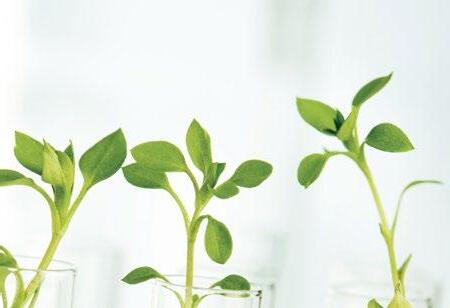
Proteins and fats
High fiber diet
Sugars
Table 1. Effect of diet on microbiome composition. Probiotics, Prebiotics, and Phytogenic Substances for Optimizing Gut Health in Poultry - Part II DOWNLOAD PDF
CONCLUSIONS
To prevent the multifactorial conditions associated with chronic stress, numerous studies have shown that alternative products, such as probiotics, targeted microbes, prebiotics and phytochemicals, can help improve gut microbial balance, metabolism and intestinal integrity.
These food additives have been corroborated to have anti-inflammatory, antioxidant, immunomodulatory and barrier integrity enhancing characteristics.
To meet their health and productivity goals, poultry producers who have eliminated antibiotics from their production systems can use a combination of alternative products along with improved management methods, rigorous biosecurity and effective immunization programs.
59 Nutrition aviNews International June 2024 | Probiotics, Prebiotics, and Phytogenic Substances for Optimizing Gut Health in Poultry - Part II
Do you want to reduce the high costs of feed manufacturing?
Do you want to optimize the use of energy in your diet?
Do you want to improve the productive parameters of your animals?
What is Energy Feed?
It is an alternative nutritional energy source that provides animals with substrates responsible for optimizing the ingredients of the rations so that in GLUCONEOGENESIS we can obtain greater availability of Energy (ATP).
Energy Feed being an energy source, is capable of replacing other more expensive energy sources, so it can reduce the costs of manufacturing balanced feed.
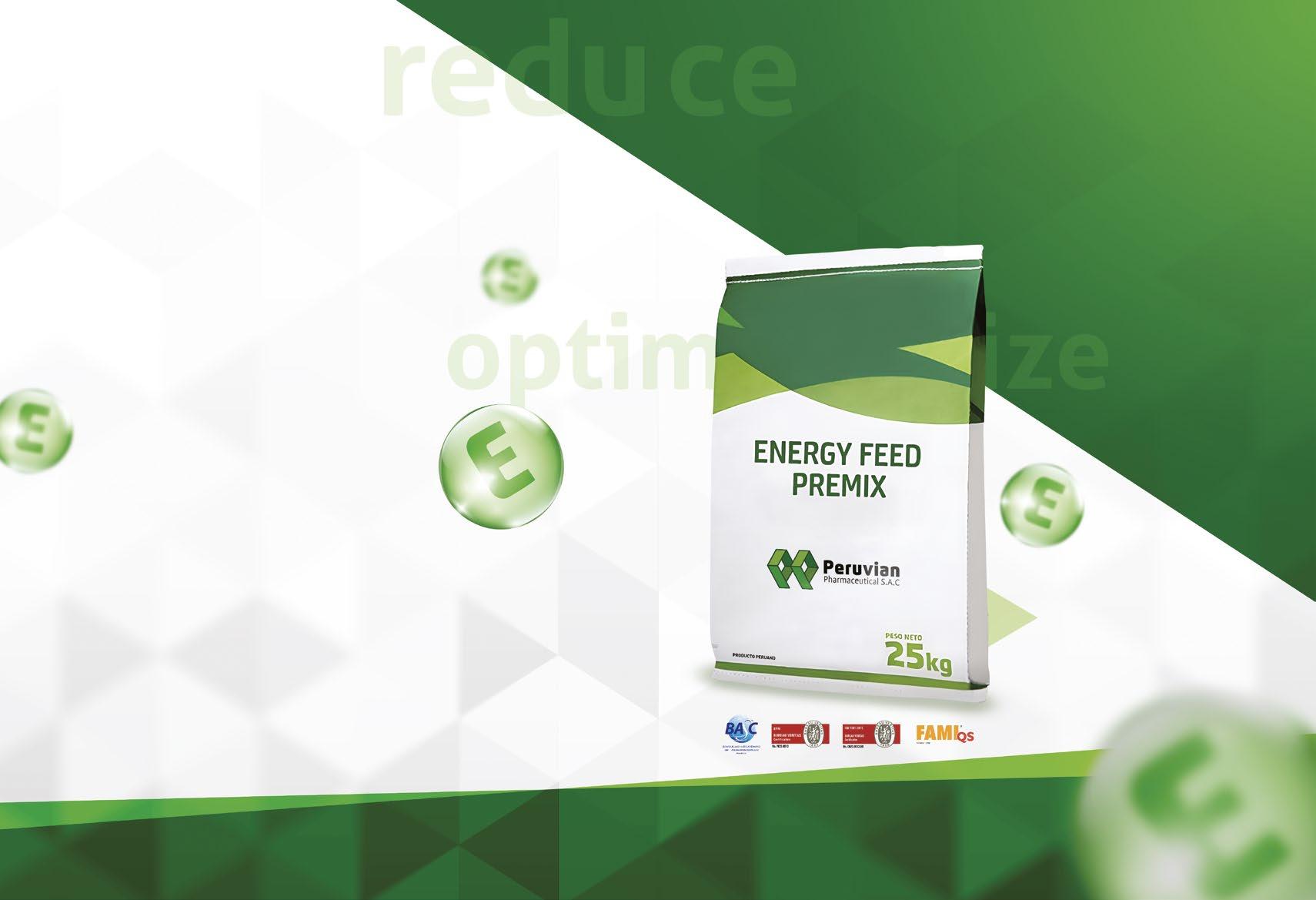
But... What is Gluconeogenesis?
It is the metabolic pathway that results in the biosynthesis of glucose from certain non-carbohydrate substrates, including catabolic substrates of lipids and proteins, and which occurs mainly in the liver.
Through it, animals can obtain immediate energy that does not come from the carbohydrates and fats present in the feed.
improve
www.peruvianpharmaceutical.com
Energy Feed
Energy Matrix:
Monogastrics: 70 Mcal/kg of ME
Ruminants: 70 Mcal/kg of EM or 40 Mcal/kg of ENL
Use:

Presentations:
Powder: 25kg bag
Liquid: 1L, 4L, 20L.
Peruvian Pharmaceutical S.A.C. Av. Miguel Grau N° 502 Int. A, Santa Cruz de Cocachacra - Huarochiri - Lima +51 955346115 facturacion@peruvianpharmaceutical.com POWDER ADDITIVE
DISEASES CAUSING BROILER BREEDER MALE INFERTILITY
Edgar O. Oviedo-Rondón1 and H. John Barnes2
1 Prestage Department of Poultry Science and 2 College of Veterinary Medicine, North Carolina State University, Raleigh, NC
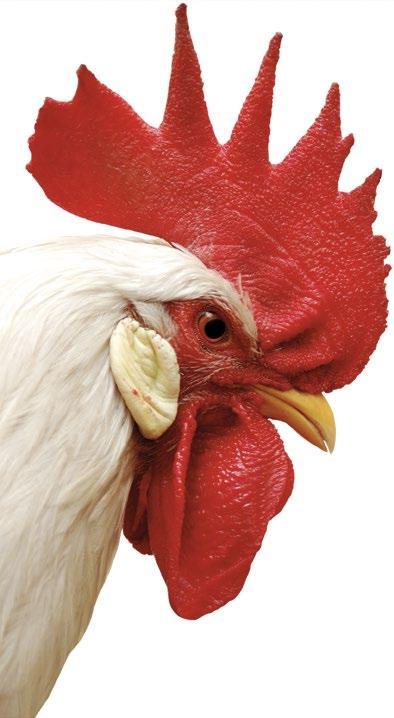
INTRODUCTION
Infertility in breeder flocks has become a common concern in broiler breeder production.
The causes of reproductive failure are multiple.
Infertility could be related to females, but males have a more significant impact.
Male fertility is a combination of proper spermatogenesis related to a healthy reproductive tract and mating behavior mainly linked to plasma testosterone levels. Both aspects have a high correlation with testicular size or weight.
In Figure 1, we have a broiler breeder rooster’s normal healthy reproductive tract. The semen filling the ductus deferens indicates this rooster is in production.
62 aviNews International June 2024 | Diseases causing broiler breeder male infertility Reproduction
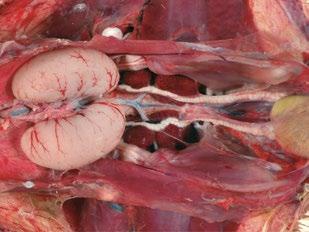
1. Normal reproductive tract.
Excessive body weight gain as roosters age or poor conformation can also cause incomplete copulations in roosters and eventually a reduction in fertility. On the other hand, roosters with low body weight (< 3,800 grams) have been also associated with low fertility.

Figure 2. Unilateral orchitis caused by E. coli. The left testis of a 27-week-old rooster is swollen and discolored.
Male infertility increases as roosters age after 40 weeks but can be accelerated due to the following factors:
Suboptimal development during rearing. Low body weights early in life cause weaker birds in the flock and lower placement in the pecking order. This causes stress, high blood corticosterone, reduced testosterone levels, delayed testicular development, and potentially faster testicular regression as roosters age.
Extended exposure to constant photoperiods longer than 12 hours during rearing.
Increase in photoperiod to more than 12 hours after 40 weeks of age.
Marginal nutritional deficiencies during the rearing and mating phases.
High crude protein and high calcium diets fed for a long time with levels similar to the ones observed in female diets can decrease sperm concentration in roosters older than 55 weeks.
Diseases caused by infectious bronchitis virus (IBV), avian metapneumovirus (aMPV), avian influenza (AI), Mycoplasma gallisepticum and Mycoplasma synoviae (MG/MS), and bacteria like Escherichia coli (Figure 2), or Staphylococcus aureus (Figure 3).

Figure 3. Orchitis caused by Staphylococcus aureus. Inflammation is evident in the swollen, discolored testis. Orchitis typically destroys the complete testis.
Figure
63
aviNews International June 2024 | Diseases causing broiler breeder male infertility
Reproduction

RESPIRATORY VIRUSES AND MALE INFERTILITY
Many respiratory viruses may also induce urogenital infections, leading to nephropathogenic disease, false layer syndrome in laying hens, epididymal lithiasis and epididymitis in males.
It has been reported that Arkansas (Ark) and Massachusetts (M41) IBV virulent strains can have venereal transmission (Gallardo et al., 2011).
The IBV strain DMV/1639 has been detected in the efferent ducts of epididymides and testes in roosters in the USA (Gallardo et al., 2022).
The QX-type IBV in Asia (Yan et al., 2023) and the European IBV genotype D274 replicate in Brazil (Villareal et al., 2007) have been isolated from the testis and ductus deferens, causing mass germ cell apoptosis and reducing fertility.
IBV M41 and Ark were detected in spermatogonia and Sertoli cells of the testicles of almost all infected roosters seven days post-inoculation in the USA (Gallardo et al., 2011).
Roosters immunized prepubertally with some strains of the avian IBV have a high incidence of epididymal calcium stones, reduced daily sperm production and lower serum testosterone as adults (Jackson et al., 2006). It is essential to perform molecular surveillance of IBV to monitor vaccine strains and detect emerging IBV variants that can affect fertility.

64 aviNews International June 2024 | Diseases causing broiler breeder male infertility Reproduction


EPIDIDYMAL LITHIASIS (STONES)
Epididymal lithiasis (stones) is probably the most common finding in males of broiler breeder flocks reporting increased infertility.
Epididymal lithiasis is characterized by the formation of luminal stones rich in calcium in the rooster’s epididymal region (Figure 4).

Males affected by this disease have severe testicular and epididymal alterations.
Testicular damage encompasses the dilation of seminiferous tubules, sloughing of the seminiferous epithelium, and increased Leydig cell frequency within the interstitial tissue (Figure 5).
Figure 4. Epididymal lithiasis (stones) in a 65-week-old broiler breeder rooster. When the epididymis is cut, it feels gritty. The yellow organ is part of the adrenal gland.
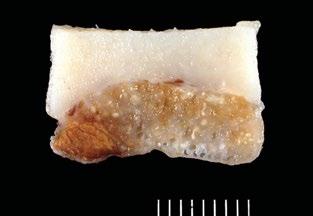
Figure 5. The epididymal region of roosters. (A) Macroscopical view of the testis and epididymal region (highlighted area). (B) The epididymal region of non-affected animals shows proximal efferent ductules with highly folded epithelium (PED), distal efferent ductules (DED), and epididymal duct (EP). (C) The epididymal region of roosters is affected by epididymal lithiasis, showing luminal stones (*) and loss of epithelial folding in proximal efferent ductules (PED). The epididymal duct (EP) shows no evident alterations. Bar in B and CZ100 mm. T, testis; EP, epididymal region; Vas, deferent duct. (Oliveira et al., 2011).

65
aviNews International June 2024 | Diseases causing broiler breeder male infertility
Reproduction
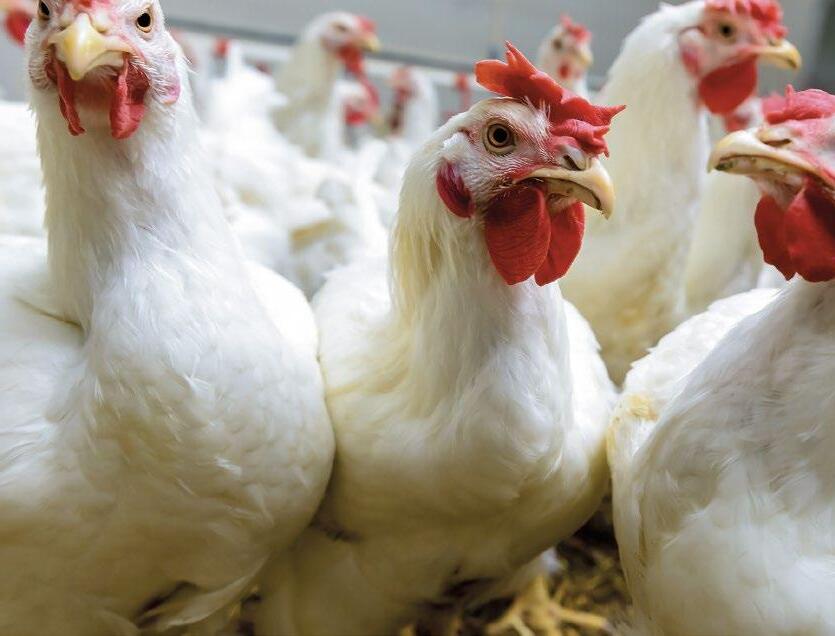
The efferent ductules comprise up to 60% of the epididymal region and are the most affected segment in the rooster’s genital tract in this disease.
These ductules are responsible for testicular fluid and calcium reabsorption, essential for sperm concentration and maturation.
In roosters affected with epididymal lithiasis, there is an imbalance in Vitamin D (VDR) and estrogen receptors (ESR2) levels and epididymal tissue concentrations of vitamin D3, estradiol, and testosterone (Oliveira et al., 2011).
These alterations interfere with paracellular calcium transport and calcium accumulation in the lumen of the ductules, which can cause calcium aggregation.
Additionally, scientists from the University of Kurdistan in Iran reported overexpression of the aromatase cytochrome P450 (CYP19) and aquaporin 9 (AQP9) in aged broiler breeder roosters.
The AQP9 exhibited a 4.7-fold increase in expression, while the CYP19 showed a 1.17-fold increase in expression in roosters with genital stones compared to non-affected roosters (Heydari et al, 2023).
Aromatases, also called estrogen synthetases, are enzymes responsible for many reactions involved in steroidogenesis.
Roosters affected by epididymal lithiasis exhibited a notably high plasma estrogen/testosterone ratio, suggesting a correlation with the expression level of CYP19 (Heydari et al, 2023).
Previous studies have shown a connection between elevated estrogen concentrations and rooster age, which strengthens the ability of the extratesticular ducts to absorb and concentrate estrogen.
Estrogen plays a crucial role in regulating secretion of the sperm into the testis region and its subsequent reabsorption in the adjacent afferent ducts.
This alteration in estrogen levels may promote increased fluid reabsorption in the epididymis.

66 aviNews International June 2024 | Diseases causing broiler breeder male infertility Reproduction

The condensation of epididymal duct contents and the reduction in ciliated cells make it harder for semen to move. They can also block extratesticular ducts, which can lead to the low fertility syndrome seen in aged roosters (Figure 6).
However, the reduction in fertility could also be attributed to changes in the production of sperm at the testicular level and impaired maturation in the epididymis.
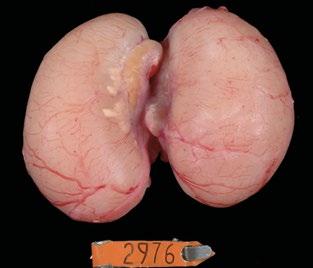
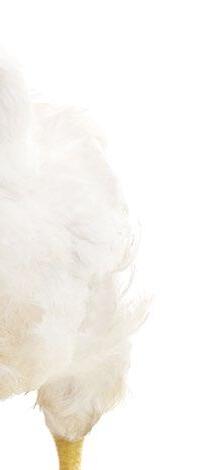
Figure 6. Testis of a 67-week-old rooster from a flock with normal fertility. However, the sperm has collected in the right testis and epididymis because of an obstructed ductus deferens.
Testes weight could be even higher in roosters with epididymal lithiasis than in non-affected roosters (Heydari et al, 2023).
The seminiferous epithelium thickness and tubule diameter are reduced in affected roosters.
Sperm motility and concentration decline, and sperm abnormalities increase in affected roosters (19.93 ± 2.17) compared to non-affected (11.93 ± 1.62) (Heydari et al, 2023).
Dietary antioxidants, vitamin C, E, selenium, and many phytobiotic products may mitigate some of the negative effects of aging, epididymal damage caused by viruses and bacteria. However, they do not prevent this condition and not always are effective.
A better understanding of this disease can help develop more prevention methods. Maintaining healthy testicles as roosters age may minimize fertility losses that have significant impacts on profitability.
References upon request
Diseases causing broiler breeder male infertility DOWNLOAD PDF
67
aviNews International June 2024 | Diseases causing broiler breeder male infertility
Reproduction
EMERGING FOOTPAD DERMATITIS CHALLENGES IN BROILERS AND NUTRITIONAL INTERVENTIONS
Mercedes Vázquez-Añón Novus Technical Team
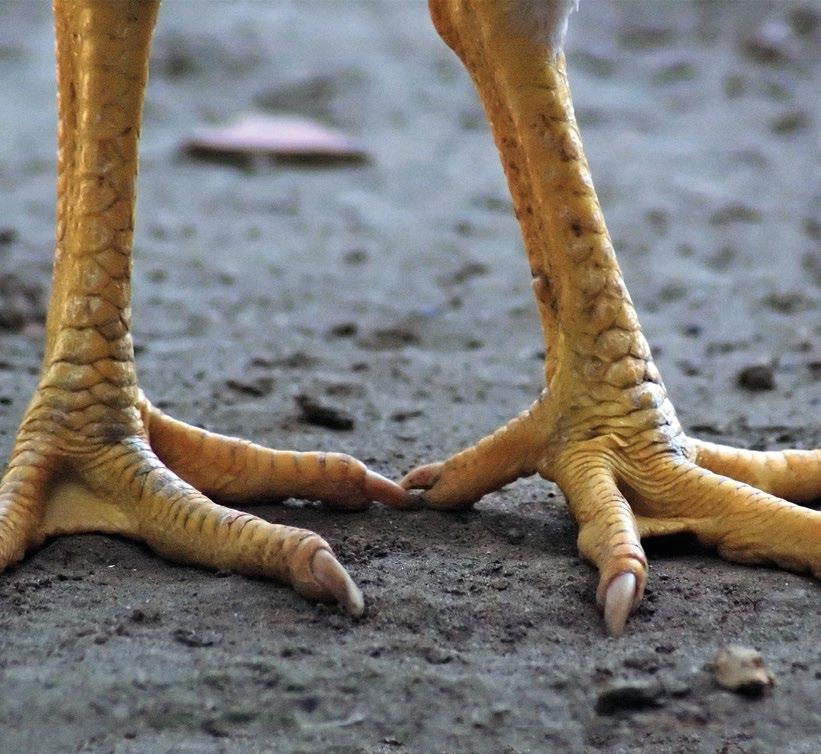
The broiler industry has made significant progress in the last two decades with genetic improvements and husbandry management that have made a very efficient and fastgrowing broiler.
Management and nutrition have been geared to support bigger birds in the least amount of time.
68 Footpad Dermatitis aviNews International June 2024 | Emerging footpad dermatitis challenges in broilers and nutritional interventions
Today’s broilers prioritize muscle deposition over skeleton and soft tissue development leading to structural integrity challenges, which can be exacerbated with gut health challenges in antibiotic free programs.

This summary covers the most emerging structural integrity challenges related to footpad dermatitis and carcass quality the current broiler industry is facing and nutritional interventions that can ameliorate the challenge.
Footpad dermatitis is a skin inflammation that causes necrotic lesions on the plantar surface of footpads in poultry (Shepherd et al., 2010).
In some countries, chicken feet or paws are considered as gastronomic delicacy and at present constitute the third most important economic part of the chicken (following chicken breast and wings).

Chicken paw profitability has been estimated at approximately $280 million a year (US Poultry & Egg Council, 2016).
In addition to causing increased condemnation loss, the incidence of footpad lesions is also an audit criterion in welfare evaluations of poultry production (Mayne, 2005; Matland 1985).
Lesions in footpads can induce systemic infection in poultry, hence, footpad dermatitis is considered as a food safety issue (Matland, 1985; Campo et al., 2005; Managi et al., 2012).
Footpad dermatitis is a multifactorial condition that is caused by:
Dietary ingredients, Nutritional deficiencies, Wet litter, Litter material types, Genetic strain, Sex, Bird weight, Stocking density, Season, Management.
(Mayne, 2005, Harms et al., 1977; Nagaraj et al., 2007).
69
aviNews International June 2024 | Emerging footpad dermatitis challenges in broilers and nutritional interventions
Footpad Dermatitis
Wet litter has been reported to be the most central predisposing factor for footpad dermatitis development in poultry (Martland, 1984; Wang et al 1998; Mayne 2007).
Some researchers have reported that replacement of wet litter with dry litter improved the footpad lesions in about two weeks (Nagaraj et al, 2007; Taira et al., 2014).
Unfortunately, in the field, replacement of wet litter is not practical or economical, hence, alternative practices should be considered.
Trace minerals such as Zn, Cu, and Mn are known to play a role in maintaining the structural integrity of different tissues including skin (Manangi et al, 2012; Maricola 2003; Lansdown et al., 2007; Iwate et al 1999, Viera et al. 2013, Berger et al., 2007 Figure 1).
Nutraceuticals such as probiotics, prebiotics, or enzymes that improve intestinal integrity and improve fecal consistency and litter quality can also reduce footpad lesions (Van Dee Aa et al, 200*).
Structural integrity of the fabric (bone, tendon, hoof, shell, membrane, skin, intestine, feathers, etc.).
Collagen and keratin (Zn) synthesis and bonding (Cu); Union of Elastin (Cu).
Bone development and strength
Collagen (Zn and Cu), Cartilage (Mn) & Ossification (Zn, Cu, Mn).
Enzymatic activity
Hundreds of enzymes depend on Zn, Cu, Mn and Se.



A variety of biomarkers for footpad lesion development and wound healing which can be used to better understand the pathology and etiology of footpad dermatitis and find strategies to intervene or prevent the development of footpad lesions and promote the wound-healing process (Chen et al., 2016; Figure 2).
Figure 1. Importance of Trace Minerals
70 aviNews International June 2024 | Emerging footpad dermatitis challenges in broilers and nutritional interventions Footpad Dermatitis
Figure 2. Foot Dermatitis is a Failure in the Integrity of the Skin. Healing is a complex process.
Adherens unions
Intact Epithelium
Basal Membrane
Stromal Matrix
Collagen
Fibroblasts
Neutrophils
Injured Epithelium

Collagen
Deposition and Remodeling
Migration and Proliferation
Vascularization
Inflammation

Figure 3. Reduction in Zn levels Chelato MMHAC (30ppm Zn) vs ZnSO4 (100ppm Zn) help foot dermatitis.
Foot pads (grades 1 and 2)

Foot pads (grades 1 and 2)
Pad Health plantars, d 54

Foot pads (grades 3, 4 and 5)
Several studies have been run to evaluate the role of trace minerals at preventing the development of footpad lesions by supporting the process of wound healing.
45,37 35,65 OTM Zn OTM Zn ZnSO4 ZnSO4 63,89 54,63
% % 50 45 40 35 30 25 70 65 60 55 50 71
Dermatitis aviNews International June 2024 | Emerging footpad dermatitis challenges in broilers and nutritional interventions
Footpad
Researchers (Figure 3; Manangi et al., 2012; Chen et al., 2017) have found that supplementation of combination of Zn, Cu and Mn trace minerals in the form of mineral methionine hydroxy analog chelated (MMHAC) improved growth performance, but also reduced footpad lesions by improving the wound healing process via promotion of collagen synthesis, deposition and organization, cell migration, matrix remodeling, angiogenesis; and regulation of inflammation (Figure 4).
Figure 4. Participation of trace minerals in the regulation of the healing process.
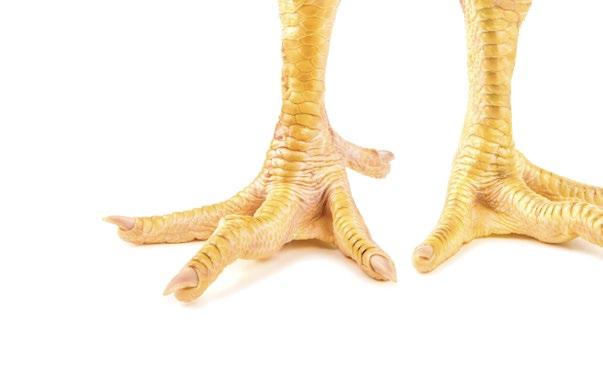


IL-1β TNFα IL-6 TLR4 CD40
and Proliferation
Deposit and remodeling of collagen
TIMP2,3,4 TNC MMP13 COL1A1 COL341
TIMP2,3,4 MMP13
Integrin α2
Integrin β1
CONCLUSIONS
Trace minerals participate in the wound healing process by reducing inflammation, increasing expression of gens involved in vascularization, migration and proliferation of the cell and deposit and remodeling of collagen.
Emerging Footpad Dermatitis Challenges in Broilers and Nutritional Interventions DOWNLOAD WPDF
Supplementation trace mineral of higher availability like MMHAC, improves footpad dermatitis and skin integrity by improving the wound healing process which results in reduction of footpad dermatitis.
References upon consultation of the author
Trace Minerals
Migration
Vascularization Inflammation VEGF
72 aviNews International June 2024 | Emerging footpad dermatitis challenges in broilers and nutritional interventions Footpad Dermatitis
WE KNOW WHAT YOU’RE MADE OF.
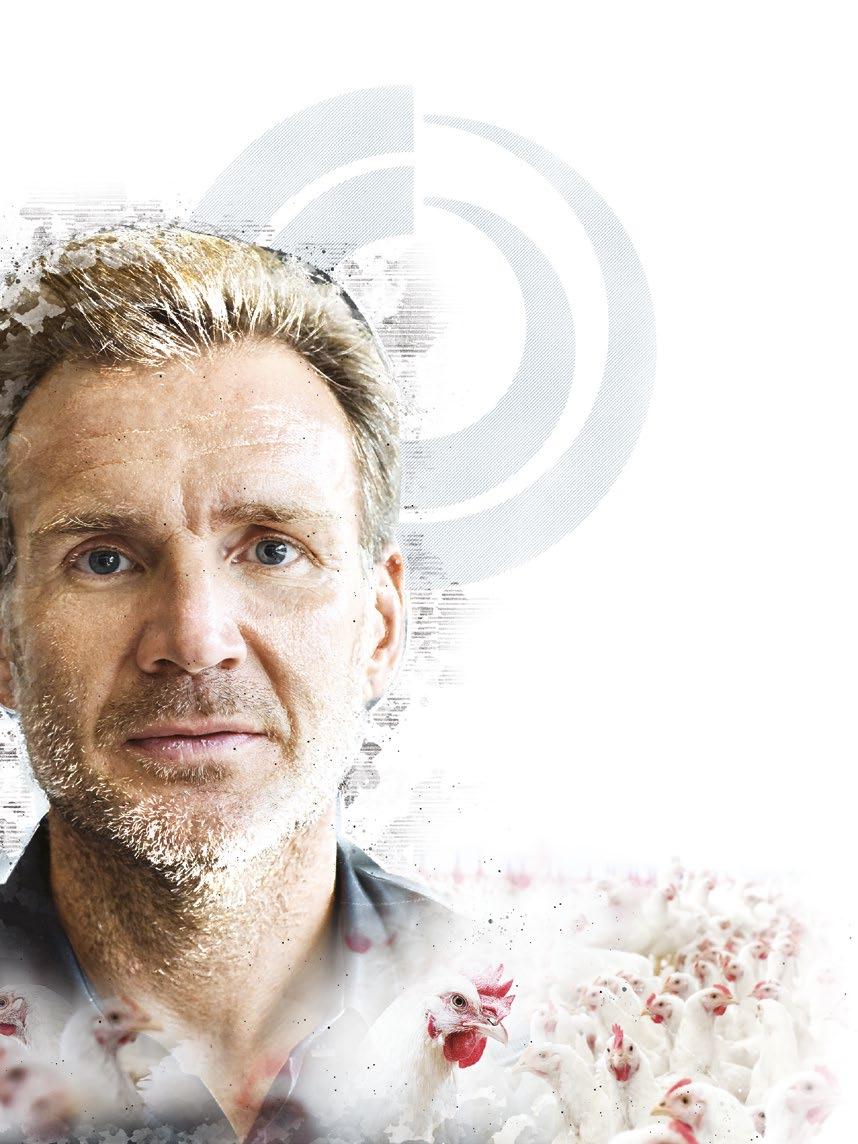
Every day, the world asks poultry producers to do more. More growth. More efficiency. And every day, you’ve just got more to do. More challenges to overcome. More products that promise to do more… but don’t. That’s why you can rely on NOVUS for intelligent nutrition solutions that are made of more. NOVUS delivers advanced technology, rooted in scientific research, designed to help your birds reach their full potential. Together, we can show the world that you’re made of more.
INFO@NOVUSINT.COM • 1-800-568-0088
®
TM
©2024
NOVUSINT.COM
is a trademark of Novus International, Inc., and is registered in the United States and other countries.
Made of More is a trademark of Novus International, Inc.
Novus International, Inc. All rights reserved.
EVELIEN GERMERAAD

Vaccination against AI seems within reach
There’s no need to explain to what extent Avian influenza (AI) affects the global poultry business. This highly contagious and lethal avian disease causes not just massive economic damage, but as a zoonotic disease also threatens human health. Pharmaceutic companies are making progress however, to develop vaccines against AI. Wageningen Bioveterinary Research (WBVR), part of Wageningen University & Research in the Netherlands, tested four of such possible vaccines. After laboratory research, two of these vaccines seem promising, says researcher Evelien Germeraad of WBVR.
INTERVIEW
74 interview aviNews International June 2024 | Interview with Evelien Germeraad
There’s not just one strain of Avian influenza (AI) to combat. In the last decade there were different subtypes of highly pathogenic avian influenza virus, according to Evelien Germeraad. Together with a number of other specialists, Evelien belongs to the research team at Wageningen Bioveterinary Research (WBVR) in Lelystad (Netherlands), the institute that currently investigates the effectiveness of possible vaccines together with partners from Utrecht University and Wageningen University.
“The most recent outbreak started in October 2021 and is not officially under control yet (May 2023). This outbreak is much more severe and the largest outbreak in Europe thus far. Millions of birds were culled since the virus was first detected, not just in The Netherlands, but across Europe. And HPAI is not limited to Europe only, but spread to all corners of the world. It is truly difficult to eradicate”.
“If we go back to the year 2003, the High Pathogenic (HP) H7 AI strain severely struck the poultry business in The Netherlands”, she says. In those days about 30 million birds were culled by the Dutch authorities to combat and prevent further spreading of the disease. In the year 2014, there was another outbreak, this time caused by a HP H5N8 virus. Poultry at 5 farms was infected. From 2016 until 2020 several farms were infected.

75 interview aviNews International June 2024 | Interview with Evelien Germeraad

PVC evaporative cooling pad



• Plastic panel with high cooling efficiency
• Available in the height range 1200, 1500, 1800, 2000mm and thickness 150mm
• Possibility of sending knocked-down “KD” in order to save on freight costs
• High darkening capacity
• Designed and produced in Italy
pericoli.com

The AI virus H5N1 that circulates at the moment originates from waterfowl from Siberia. These birds migrate to more southern located countries in Europe during the winter season. Here, these birds reside under milder conditions. These migrating birds convey the disease with them, affecting poultry flocks, either by their droppings during the flight, or in the vicinity of where they accommodate. “
Due to current and future welfare insights, a number of commercial poultry flocks partly reside outdoors nowadays. This makes these flocks an easy “target” for AI, carried by the wild birds. For this reason, the Dutch ministry of Agriculture has ordered in October 2022 that all Dutch poultry should be kept indoors. This regulation still holds.
From a welfare point of view, here we see the friction between the current desire in Europe to keep poultry under outdoor conditions and the increased risk of HPAI infection. Thus, there’s much reason to take appropriate measures.
The immediate measures, conducted by the ministry of Agriculture, include the obligation of the farmer to keep the flock indoors, usually preventive culling of farms in the vicinity of an infected farm and installing zones in the country where transportation of live birds is prohibited.
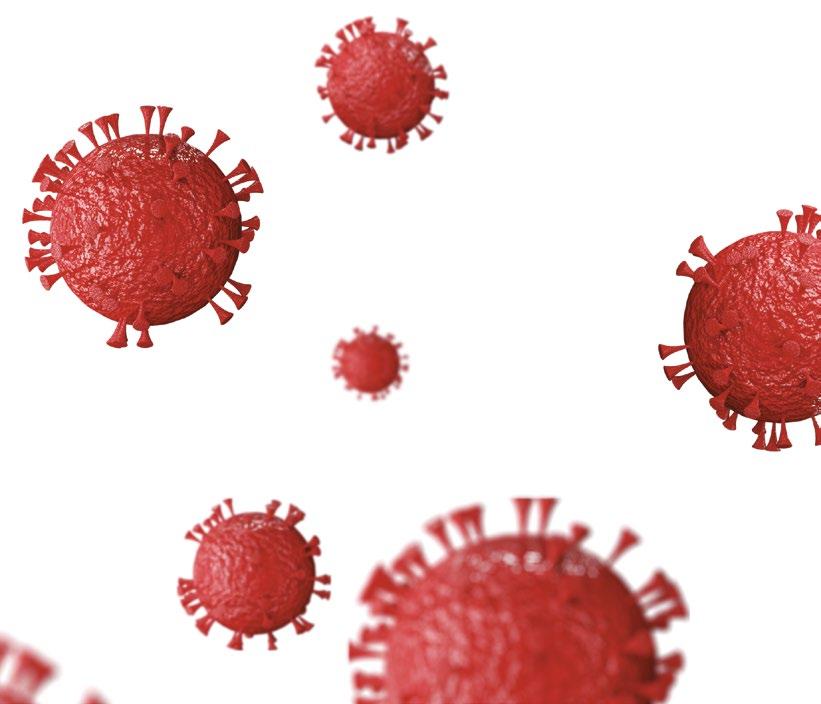
“Despite the comprehensive biosecurity program, strict hygiene measures and the shielding obligation, the bird flu virus was detected in around 60 Dutch poultry farms during 2022-2023,” Evelien continues.
77 interview aviNews International June 2024 | Interview with Evelien Germeraad
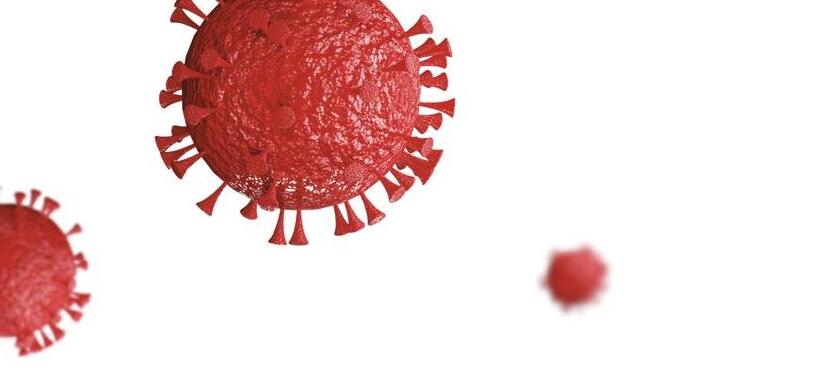
The virus remained present year round, hitting both commercial farms and wild birds.
Also, normally during the summer season with higher temperatures, abundant presence of UV light and the return of wild birds to their breeding grounds, AI usually “extinguishes” and seems to disappear. This wasn’t the case this time. The virus remained present year round, hitting both commercial farms and wild birds. In wild birds not only the migrating birds, but also non-migrating species such as seagulls and storks were subject to the AI infection in 2022.
“Recent data show that the shielding obligation combined with the biosecurity and hygiene measures taking by commercial poultry farmers in the Netherlands, have proven effective in keeping the bird flu virus at bay. The last bird flu case on a commercial farm was registered in January of 2023. In wild birds however, we continue to detect the H5N1 virus in different species. We are closely monitoring the situation and are anxious to see how the disease will develop through the next summer period.”
The demand for an effectively working vaccine is growing
As a result of this ongoing situation, logically the demand for an effectively working vaccine is growing. Not just in The Netherlands or in Europe, but across the globe. After all, the consequences and the impact of AI are dramatic, both from an economic - as well as from a (public) health point of view.
Yet, this is not as easy as it sounds. Firstly, there are various variants of HPAI viruses.

78 interview aviNews International June 2024 | Interview with Evelien Germeraad
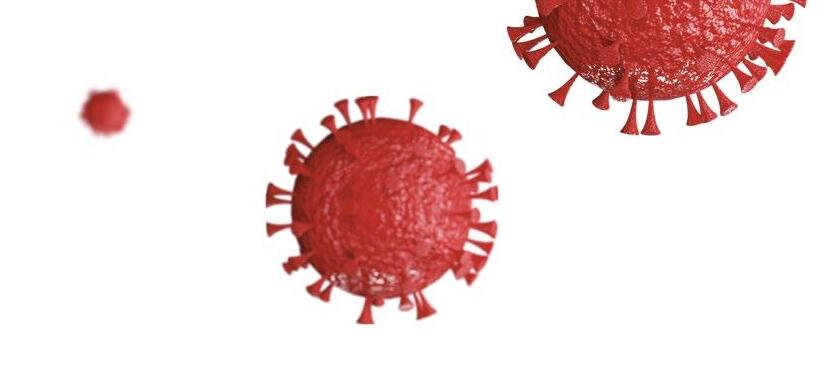
The genetic composition of AI virus in the USA for example, is different from Europe and Africa and again different that the virus in Asia or Africa. Moreover, a virus can relatively easy mutate into sometimes new strains. Think in this context about the “survival of the fittest”.
And not just that. A vaccine against current and future HPAI H5 avian influenza viruses that can be used to protect poultry, must meet several conditions for use.
The vaccine (in combination with another vaccine) must be effective in reducing virus transmission (Replication factor R<1) under field conditions and fit into the current vaccination program for poultry. The objective is to avoid “silent spread” of HPAI H5 viruses.
It should also be possible to conduct monitoring and surveillance programs to determine whether poultry are adequately protected by vaccination and whether no avian influenza virus is present.
In addition, it must be possible to serologically distinguish vaccinated animals from infected animals according to the DIVA principle (Differentiating Infected from Vaccinated Animals).

79 interview aviNews International June 2024 | Interview with Evelien Germeraad
Under these conditions, research at Wageningen Bioveterinary Research to find an effective vaccine, is currently taking place and this seems promising. Four vaccines were tested under laboratory conditions among layers, which were by injection vaccinated with vaccines, developed by four different pharmaceutics companies.
The conclusion of this study is that two HVT-H5 vaccines meet the predetermined conditions in an experimental environment, under which these vaccines were tested.
Virus transmission for both vaccines was significantly reduced relative to the unvaccinated control group and the replication factor R was significantly smaller than 1 (R<1).
The chickens were completely protected from disease after infection with the HPAI H5N1 virus.
The vaccines comply with the DIVA principle and can be administered in ovo (in the egg) or by injection subcutaneously to day-old chicks in the hatchery.
This type of vector vaccine is known to be effective only in chickens and turkeys.
The next step will be testing laying birds under field conditions at an age of 8 weeks. This research, commissioned by the Dutch ministry of Agriculture and the poultry sector, is currently being set up by WBVR in conjunction with the University of Utrecht, Wageningen University and the Animal Health Service (Gezondheidsdienst Dieren). Most likely this will generate useful additional results.
Hence, the development of a vaccine against HPAI virus seems to have made a major step forward. Someday, it must be possible to protect poultry across the globe against contagious High Pathogenic Avian Influenza virus. The first steps have been taken. “We keep moving on to eventually find the answer”, Evelien Germeraad concludes.

DOWNLOAD THE PDF
Interview with Evelien Germeraad
80 aviNews International June 2024 | Interview with Evelien Germeraad interview

www.avinews.com Sign up for free! The global poultry magazine in English for the international market is now available!
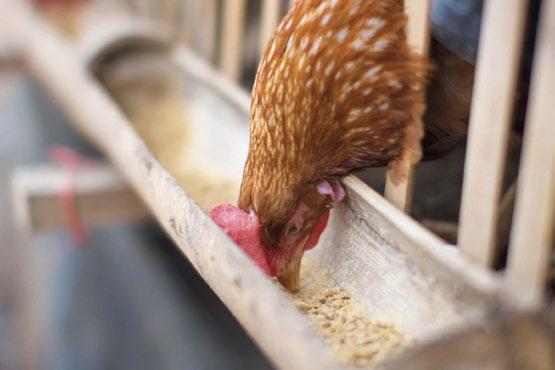



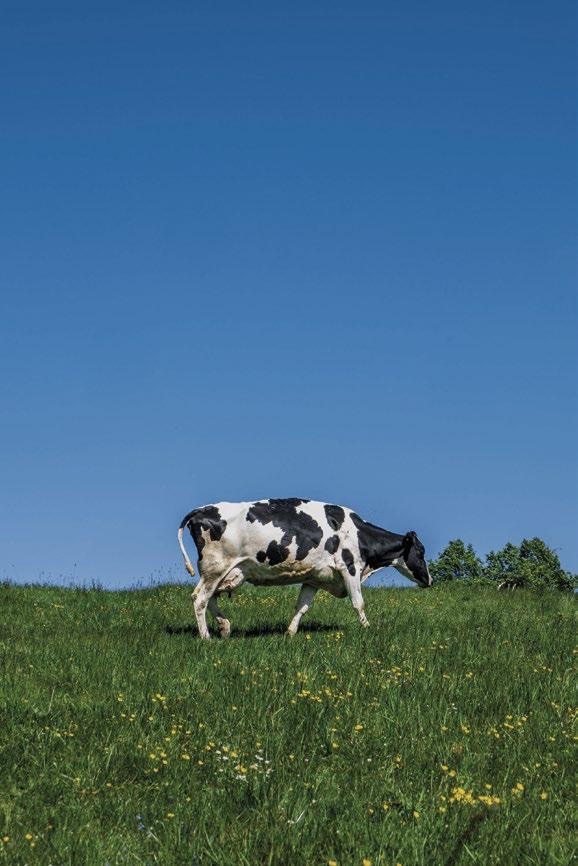
The end of mycotoxins with MYCOAD AZ MYCOAD
Proven in different species
specialnutrients.com


 Kate Barger Weathers, DVM KB Welfare Consulting,
Kate Barger Weathers, DVM KB Welfare Consulting,















 Luis Carrasco Managing Director
Luis Carrasco Managing Director





























 Figure 1. Flesher.
Figure 1. Flesher.

















 Photo 2 and 3. The number of exploding eggs generates a high bacterial load inside the machines.
Photo 2 and 3. The number of exploding eggs generates a high bacterial load inside the machines.







 Photo 5: Install drinkers at slat level.
Photo 5: Install drinkers at slat level.
















































































































































